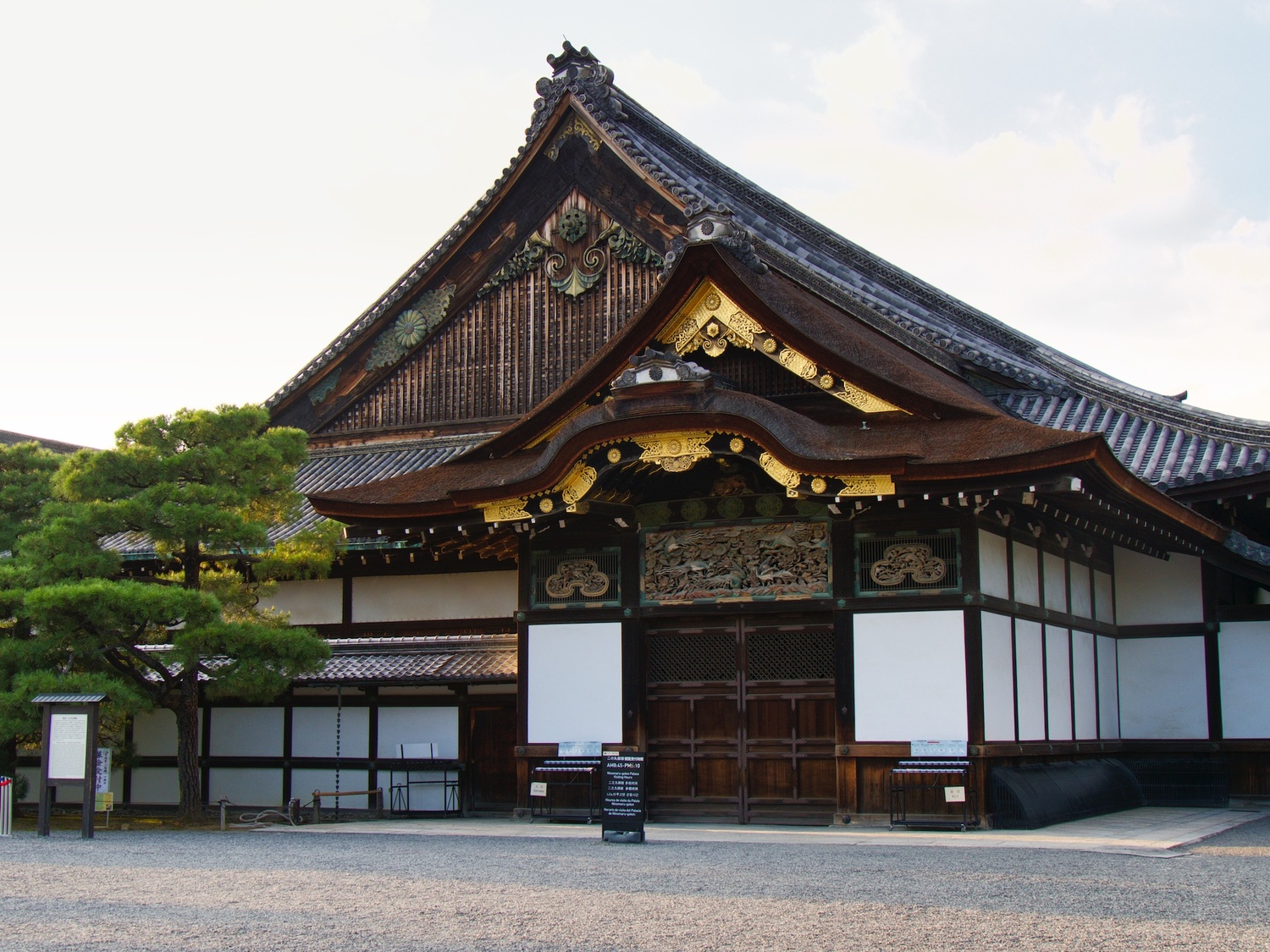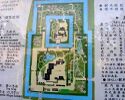Loading map...
{"format":"leaflet","minzoom":false,"maxzoom":false,"limit":500,"offset":0,"link":"all","sort":["order"],"order":[],"headers":"show","mainlabel":"","intro":"","outro":"","searchlabel":"... further results","default":"","import-annotation":false,"width":"auto","height":"350px","centre":false,"title":"","label":"","icon":"Darkred18.png","lines":[],"polygons":[],"circles":[],"rectangles":[],"copycoords":false,"static":false,"zoom":false,"defzoom":14,"layers":["Esri.WorldTopoMap"],"image layers":[],"overlays":[],"resizable":false,"fullscreen":false,"scrollwheelzoom":true,"cluster":false,"clustermaxzoom":20,"clusterzoomonclick":true,"clustermaxradius":80,"clusterspiderfy":true,"geojson":"","clicktarget":"","showtitle":false,"hidenamespace":true,"template":"InfoWindowProfile","userparam":"","activeicon":"","pagelabel":false,"ajaxcoordproperty":"","ajaxquery":"","locations":[{"text":"\u003Cdiv style=\"width:150px\"\u003E\n\u003Cp\u003E\u003Ca href=\"/view/File:Nijo1.jpg\" class=\"image\"\u003E\u003Cimg alt=\"Nijo1.jpg\" src=\"../images/thumb/b/b6/Nijo1.jpg/125px-Nijo1.jpg\" decoding=\"async\" width=\"125\" height=\"94\" srcset=\"../images/thumb/b/b6/Nijo1.jpg/188px-Nijo1.jpg 1.5x, ../images/thumb/b/b6/Nijo1.jpg/250px-Nijo1.jpg 2x\" data-file-width=\"1500\" data-file-height=\"1125\" /\u003E\u003C/a\u003E\u003C!--MW-PAGEIMAGES-CANDIDATE-0--\u003E\n\u003C/p\u003E\n\u003C/div\u003E","title":"","link":"","lat":35.01292,"lon":135.75049,"icon":"../images/0/06/Darkred18.png"},{"text":"\u003Cdiv style=\"width:150px\"\u003E\n\u003Cp\u003E\u003Ca href=\"/view/File:Nijo4.jpg\" class=\"image\"\u003E\u003Cimg alt=\"Nijo4.jpg\" src=\"../images/thumb/3/3a/Nijo4.jpg/125px-Nijo4.jpg\" decoding=\"async\" width=\"125\" height=\"94\" srcset=\"../images/thumb/3/3a/Nijo4.jpg/188px-Nijo4.jpg 1.5x, ../images/thumb/3/3a/Nijo4.jpg/250px-Nijo4.jpg 2x\" data-file-width=\"1500\" data-file-height=\"1125\" /\u003E\u003C/a\u003E\u003C!--MW-PAGEIMAGES-CANDIDATE-1--\u003E\n\u003C/p\u003E\n\u003C/div\u003E","title":"","link":"","lat":35.0121,"lon":135.7515,"icon":"../images/0/06/Darkred18.png"},{"text":"\u003Cdiv style=\"width:150px\"\u003E\n\u003Cp\u003E\u003Ca href=\"/view/File:Nijo21.jpg\" class=\"image\"\u003E\u003Cimg alt=\"Nijo21.jpg\" src=\"../images/thumb/a/ae/Nijo21.jpg/125px-Nijo21.jpg\" decoding=\"async\" width=\"125\" height=\"83\" srcset=\"../images/thumb/a/ae/Nijo21.jpg/188px-Nijo21.jpg 1.5x, ../images/thumb/a/ae/Nijo21.jpg/250px-Nijo21.jpg 2x\" data-file-width=\"1500\" data-file-height=\"1000\" /\u003E\u003C/a\u003E\u003C!--MW-PAGEIMAGES-CANDIDATE-2--\u003E\n\u003C/p\u003E\n\u003C/div\u003E","title":"","link":"","lat":35.012563888889,"lon":135.75076666667,"icon":"../images/0/06/Darkred18.png"},{"text":"\u003Cdiv style=\"width:150px\"\u003E\n\u003Cp\u003E\u003Ca href=\"/view/File:Nijo28.jpg\" class=\"image\"\u003E\u003Cimg alt=\"Nijo28.jpg\" src=\"../images/thumb/2/2c/Nijo28.jpg/125px-Nijo28.jpg\" decoding=\"async\" width=\"125\" height=\"94\" srcset=\"../images/thumb/2/2c/Nijo28.jpg/188px-Nijo28.jpg 1.5x, ../images/thumb/2/2c/Nijo28.jpg/250px-Nijo28.jpg 2x\" data-file-width=\"1500\" data-file-height=\"1125\" /\u003E\u003C/a\u003E\u003C!--MW-PAGEIMAGES-CANDIDATE-3--\u003E\n\u003C/p\u003E\n\u003C/div\u003E","title":"","link":"","lat":35.01298,"lon":135.74976,"icon":"../images/0/06/Darkred18.png"},{"text":"\u003Cdiv style=\"width:150px\"\u003E\n\u003Cp\u003E\u003Ca href=\"/view/File:Nijo52.jpg\" class=\"image\"\u003E\u003Cimg alt=\"Nijo52.jpg\" src=\"../images/thumb/6/6a/Nijo52.jpg/125px-Nijo52.jpg\" decoding=\"async\" width=\"125\" height=\"94\" srcset=\"../images/thumb/6/6a/Nijo52.jpg/188px-Nijo52.jpg 1.5x, ../images/thumb/6/6a/Nijo52.jpg/250px-Nijo52.jpg 2x\" data-file-width=\"1500\" data-file-height=\"1125\" /\u003E\u003C/a\u003E\u003C!--MW-PAGEIMAGES-CANDIDATE-4--\u003E\n\u003C/p\u003E\n\u003C/div\u003E","title":"","link":"","lat":35.01371,"lon":135.74926,"icon":"../images/0/06/Darkred18.png"},{"text":"\u003Cdiv style=\"width:150px\"\u003E\n\u003Cp\u003E\u003Ca href=\"/view/File:Nijo61.jpg\" class=\"image\"\u003E\u003Cimg alt=\"Nijo61.jpg\" src=\"../images/thumb/d/d6/Nijo61.jpg/125px-Nijo61.jpg\" decoding=\"async\" width=\"125\" height=\"94\" srcset=\"../images/thumb/d/d6/Nijo61.jpg/188px-Nijo61.jpg 1.5x, ../images/thumb/d/d6/Nijo61.jpg/250px-Nijo61.jpg 2x\" data-file-width=\"1500\" data-file-height=\"1125\" /\u003E\u003C/a\u003E\u003C!--MW-PAGEIMAGES-CANDIDATE-5--\u003E\n\u003C/p\u003E\n\u003C/div\u003E","title":"","link":"","lat":35.01359,"lon":135.75058,"icon":"../images/0/06/Darkred18.png"},{"text":"\u003Cdiv style=\"width:150px\"\u003E\n\u003Cp\u003E\u003Ca href=\"/view/File:Nijo77.jpg\" class=\"image\"\u003E\u003Cimg alt=\"Nijo77.jpg\" src=\"../images/thumb/c/cb/Nijo77.jpg/125px-Nijo77.jpg\" decoding=\"async\" width=\"125\" height=\"94\" srcset=\"../images/thumb/c/cb/Nijo77.jpg/188px-Nijo77.jpg 1.5x, ../images/thumb/c/cb/Nijo77.jpg/250px-Nijo77.jpg 2x\" data-file-width=\"1500\" data-file-height=\"1125\" /\u003E\u003C/a\u003E\u003C!--MW-PAGEIMAGES-CANDIDATE-6--\u003E\n\u003C/p\u003E\n\u003C/div\u003E","title":"","link":"","lat":35.01383,"lon":135.74913,"icon":"../images/0/06/Darkred18.png"},{"text":"\u003Cdiv style=\"width:150px\"\u003E\n\u003Cp\u003E\u003Ca href=\"/view/File:Nijo53.jpg\" class=\"image\"\u003E\u003Cimg alt=\"Nijo53.jpg\" src=\"../images/thumb/a/a5/Nijo53.jpg/125px-Nijo53.jpg\" decoding=\"async\" width=\"125\" height=\"94\" srcset=\"../images/thumb/a/a5/Nijo53.jpg/188px-Nijo53.jpg 1.5x, ../images/thumb/a/a5/Nijo53.jpg/250px-Nijo53.jpg 2x\" data-file-width=\"1500\" data-file-height=\"1125\" /\u003E\u003C/a\u003E\u003C!--MW-PAGEIMAGES-CANDIDATE-7--\u003E\n\u003C/p\u003E\n\u003C/div\u003E","title":"","link":"","lat":35.01347,"lon":135.74946,"icon":"../images/0/06/Darkred18.png"},{"text":"\u003Cdiv style=\"width:150px\"\u003E\n\u003Cp\u003E\u003Ca href=\"/view/File:Nijo10.jpg\" class=\"image\"\u003E\u003Cimg alt=\"Nijo10.jpg\" src=\"../images/thumb/c/ca/Nijo10.jpg/125px-Nijo10.jpg\" decoding=\"async\" width=\"125\" height=\"94\" srcset=\"../images/thumb/c/ca/Nijo10.jpg/188px-Nijo10.jpg 1.5x, ../images/thumb/c/ca/Nijo10.jpg/250px-Nijo10.jpg 2x\" data-file-width=\"1500\" data-file-height=\"1125\" /\u003E\u003C/a\u003E\u003C!--MW-PAGEIMAGES-CANDIDATE-8--\u003E\n\u003C/p\u003E\n\u003C/div\u003E","title":"","link":"","lat":35.01364,"lon":135.74929,"icon":"../images/0/06/Darkred18.png"},{"text":"\u003Cdiv style=\"width:150px\"\u003E\n\u003Cp\u003E\u003Ca href=\"/view/File:Nijo9.jpg\" class=\"image\"\u003E\u003Cimg alt=\"Nijo9.jpg\" src=\"../images/thumb/4/42/Nijo9.jpg/125px-Nijo9.jpg\" decoding=\"async\" width=\"125\" height=\"94\" srcset=\"../images/thumb/4/42/Nijo9.jpg/188px-Nijo9.jpg 1.5x, ../images/thumb/4/42/Nijo9.jpg/250px-Nijo9.jpg 2x\" data-file-width=\"1500\" data-file-height=\"1125\" /\u003E\u003C/a\u003E\u003C!--MW-PAGEIMAGES-CANDIDATE-9--\u003E\n\u003C/p\u003E\n\u003C/div\u003E","title":"","link":"","lat":35.013858333333,"lon":135.74918611111,"icon":"../images/0/06/Darkred18.png"},{"text":"\u003Cdiv style=\"width:150px\"\u003E\n\u003Cp\u003E\u003Ca href=\"/view/File:Nijo29.jpg\" class=\"image\"\u003E\u003Cimg alt=\"Nijo29.jpg\" src=\"../images/thumb/9/96/Nijo29.jpg/125px-Nijo29.jpg\" decoding=\"async\" width=\"125\" height=\"83\" srcset=\"../images/thumb/9/96/Nijo29.jpg/188px-Nijo29.jpg 1.5x, ../images/thumb/9/96/Nijo29.jpg/250px-Nijo29.jpg 2x\" data-file-width=\"1500\" data-file-height=\"1000\" /\u003E\u003C/a\u003E\u003C!--MW-PAGEIMAGES-CANDIDATE-10--\u003E\n\u003C/p\u003E\n\u003C/div\u003E","title":"","link":"","lat":35.013616666667,"lon":135.74954444444,"icon":"../images/0/06/Darkred18.png"},{"text":"\u003Cdiv style=\"width:150px\"\u003E\n\u003Cp\u003E\u003Ca href=\"/view/File:Nijo2a.jpg\" class=\"image\"\u003E\u003Cimg alt=\"Nijo2a.jpg\" src=\"../images/thumb/1/14/Nijo2a.jpg/125px-Nijo2a.jpg\" decoding=\"async\" width=\"125\" height=\"94\" srcset=\"../images/thumb/1/14/Nijo2a.jpg/188px-Nijo2a.jpg 1.5x, ../images/thumb/1/14/Nijo2a.jpg/250px-Nijo2a.jpg 2x\" data-file-width=\"1500\" data-file-height=\"1125\" /\u003E\u003C/a\u003E\u003C!--MW-PAGEIMAGES-CANDIDATE-11--\u003E\n\u003C/p\u003E\n\u003C/div\u003E","title":"","link":"","lat":35.01246,"lon":135.75033,"icon":"../images/0/06/Darkred18.png"},{"text":"\u003Cdiv style=\"width:150px\"\u003E\n\u003Cp\u003E\u003Ca href=\"/view/File:Nijo23.jpg\" class=\"image\"\u003E\u003Cimg alt=\"Nijo23.jpg\" src=\"../images/thumb/b/b4/Nijo23.jpg/125px-Nijo23.jpg\" decoding=\"async\" width=\"125\" height=\"83\" srcset=\"../images/thumb/b/b4/Nijo23.jpg/188px-Nijo23.jpg 1.5x, ../images/thumb/b/b4/Nijo23.jpg/250px-Nijo23.jpg 2x\" data-file-width=\"1500\" data-file-height=\"1000\" /\u003E\u003C/a\u003E\u003C!--MW-PAGEIMAGES-CANDIDATE-12--\u003E\n\u003C/p\u003E\n\u003C/div\u003E","title":"","link":"","lat":35.012511111111,"lon":135.75080277778,"icon":"../images/0/06/Darkred18.png"},{"text":"\u003Cdiv style=\"width:150px\"\u003E\n\u003Cp\u003E\u003Ca href=\"/view/File:Nijo2.jpg\" class=\"image\"\u003E\u003Cimg alt=\"Nijo2.jpg\" src=\"../images/thumb/0/09/Nijo2.jpg/125px-Nijo2.jpg\" decoding=\"async\" width=\"125\" height=\"94\" srcset=\"../images/thumb/0/09/Nijo2.jpg/188px-Nijo2.jpg 1.5x, ../images/thumb/0/09/Nijo2.jpg/250px-Nijo2.jpg 2x\" data-file-width=\"1500\" data-file-height=\"1125\" /\u003E\u003C/a\u003E\u003C!--MW-PAGEIMAGES-CANDIDATE-13--\u003E\n\u003C/p\u003E\n\u003C/div\u003E","title":"","link":"","lat":35.01246,"lon":135.75033,"icon":"../images/0/06/Darkred18.png"},{"text":"\u003Cdiv style=\"width:150px\"\u003E\n\u003Cp\u003E\u003Ca href=\"/view/File:Nijo2b.jpg\" class=\"image\"\u003E\u003Cimg alt=\"Nijo2b.jpg\" src=\"../images/thumb/f/f9/Nijo2b.jpg/125px-Nijo2b.jpg\" decoding=\"async\" width=\"125\" height=\"94\" srcset=\"../images/thumb/f/f9/Nijo2b.jpg/188px-Nijo2b.jpg 1.5x, ../images/thumb/f/f9/Nijo2b.jpg/250px-Nijo2b.jpg 2x\" data-file-width=\"1500\" data-file-height=\"1125\" /\u003E\u003C/a\u003E\u003C!--MW-PAGEIMAGES-CANDIDATE-14--\u003E\n\u003C/p\u003E\n\u003C/div\u003E","title":"","link":"","lat":35.01299,"lon":135.75035,"icon":"../images/0/06/Darkred18.png"},{"text":"\u003Cdiv style=\"width:150px\"\u003E\n\u003Cp\u003E\u003Ca href=\"/view/File:Nijo3.jpg\" class=\"image\"\u003E\u003Cimg alt=\"Nijo3.jpg\" src=\"../images/thumb/9/93/Nijo3.jpg/125px-Nijo3.jpg\" decoding=\"async\" width=\"125\" height=\"94\" srcset=\"../images/thumb/9/93/Nijo3.jpg/188px-Nijo3.jpg 1.5x, ../images/thumb/9/93/Nijo3.jpg/250px-Nijo3.jpg 2x\" data-file-width=\"1500\" data-file-height=\"1124\" /\u003E\u003C/a\u003E\u003C!--MW-PAGEIMAGES-CANDIDATE-15--\u003E\n\u003C/p\u003E\n\u003C/div\u003E","title":"","link":"","lat":35.01295,"lon":135.75045,"icon":"../images/0/06/Darkred18.png"},{"text":"\u003Cdiv style=\"width:150px\"\u003E\n\u003Cp\u003E\u003Ca href=\"/view/File:Nijo3b.jpg\" class=\"image\"\u003E\u003Cimg alt=\"Nijo3b.jpg\" src=\"../images/thumb/b/b5/Nijo3b.jpg/125px-Nijo3b.jpg\" decoding=\"async\" width=\"125\" height=\"94\" srcset=\"../images/thumb/b/b5/Nijo3b.jpg/188px-Nijo3b.jpg 1.5x, ../images/thumb/b/b5/Nijo3b.jpg/250px-Nijo3b.jpg 2x\" data-file-width=\"1500\" data-file-height=\"1126\" /\u003E\u003C/a\u003E\u003C!--MW-PAGEIMAGES-CANDIDATE-16--\u003E\n\u003C/p\u003E\n\u003C/div\u003E","title":"","link":"","lat":35.01293,"lon":135.75014,"icon":"../images/0/06/Darkred18.png"},{"text":"\u003Cdiv style=\"width:150px\"\u003E\n\u003Cp\u003E\u003Ca href=\"/view/File:Nijo3c.jpg\" class=\"image\"\u003E\u003Cimg alt=\"Nijo3c.jpg\" src=\"../images/thumb/d/d2/Nijo3c.jpg/125px-Nijo3c.jpg\" decoding=\"async\" width=\"125\" height=\"94\" srcset=\"../images/thumb/d/d2/Nijo3c.jpg/188px-Nijo3c.jpg 1.5x, ../images/thumb/d/d2/Nijo3c.jpg/250px-Nijo3c.jpg 2x\" data-file-width=\"1500\" data-file-height=\"1124\" /\u003E\u003C/a\u003E\u003C!--MW-PAGEIMAGES-CANDIDATE-17--\u003E\n\u003C/p\u003E\n\u003C/div\u003E","title":"","link":"","lat":35.01284,"lon":135.75019,"icon":"../images/0/06/Darkred18.png"},{"text":"\u003Cdiv style=\"width:150px\"\u003E\n\u003Cp\u003E\u003Ca href=\"/view/File:Nijo26.jpg\" class=\"image\"\u003E\u003Cimg alt=\"Nijo26.jpg\" src=\"../images/thumb/3/3f/Nijo26.jpg/125px-Nijo26.jpg\" decoding=\"async\" width=\"125\" height=\"83\" srcset=\"../images/thumb/3/3f/Nijo26.jpg/188px-Nijo26.jpg 1.5x, ../images/thumb/3/3f/Nijo26.jpg/250px-Nijo26.jpg 2x\" data-file-width=\"1500\" data-file-height=\"999\" /\u003E\u003C/a\u003E\u003C!--MW-PAGEIMAGES-CANDIDATE-18--\u003E\n\u003C/p\u003E\n\u003C/div\u003E","title":"","link":"","lat":35.01281,"lon":135.75031,"icon":"../images/0/06/Darkred18.png"},{"text":"\u003Cdiv style=\"width:150px\"\u003E\n\u003Cp\u003E\u003Ca href=\"/view/File:Nijo24.jpg\" class=\"image\"\u003E\u003Cimg alt=\"Nijo24.jpg\" src=\"../images/thumb/1/1b/Nijo24.jpg/125px-Nijo24.jpg\" decoding=\"async\" width=\"125\" height=\"83\" srcset=\"../images/thumb/1/1b/Nijo24.jpg/188px-Nijo24.jpg 1.5x, ../images/thumb/1/1b/Nijo24.jpg/250px-Nijo24.jpg 2x\" data-file-width=\"1500\" data-file-height=\"1000\" /\u003E\u003C/a\u003E\u003C!--MW-PAGEIMAGES-CANDIDATE-19--\u003E\n\u003C/p\u003E\n\u003C/div\u003E","title":"","link":"","lat":35.01255,"lon":135.75029,"icon":"../images/0/06/Darkred18.png"},{"text":"\u003Cdiv style=\"width:150px\"\u003E\n\u003Cp\u003E\u003Ca href=\"/view/File:Nijo69.jpg\" class=\"image\"\u003E\u003Cimg alt=\"Nijo69.jpg\" src=\"../images/thumb/d/d6/Nijo69.jpg/125px-Nijo69.jpg\" decoding=\"async\" width=\"125\" height=\"94\" srcset=\"../images/thumb/d/d6/Nijo69.jpg/188px-Nijo69.jpg 1.5x, ../images/thumb/d/d6/Nijo69.jpg/250px-Nijo69.jpg 2x\" data-file-width=\"1500\" data-file-height=\"1124\" /\u003E\u003C/a\u003E\u003C!--MW-PAGEIMAGES-CANDIDATE-20--\u003E\n\u003C/p\u003E\n\u003C/div\u003E","title":"","link":"","lat":35.01293,"lon":135.75026,"icon":"../images/0/06/Darkred18.png"},{"text":"\u003Cdiv style=\"width:150px\"\u003E\n\u003Cp\u003E\u003Ca href=\"/view/File:Nijo25.jpg\" class=\"image\"\u003E\u003Cimg alt=\"Nijo25.jpg\" src=\"../images/thumb/b/b1/Nijo25.jpg/125px-Nijo25.jpg\" decoding=\"async\" width=\"125\" height=\"83\" srcset=\"../images/thumb/b/b1/Nijo25.jpg/188px-Nijo25.jpg 1.5x, ../images/thumb/b/b1/Nijo25.jpg/250px-Nijo25.jpg 2x\" data-file-width=\"1500\" data-file-height=\"1000\" /\u003E\u003C/a\u003E\u003C!--MW-PAGEIMAGES-CANDIDATE-21--\u003E\n\u003C/p\u003E\n\u003C/div\u003E","title":"","link":"","lat":35.01275,"lon":135.75029,"icon":"../images/0/06/Darkred18.png"},{"text":"\u003Cdiv style=\"width:150px\"\u003E\n\u003Cp\u003E\u003Ca href=\"/view/File:Nijo27.jpg\" class=\"image\"\u003E\u003Cimg alt=\"Nijo27.jpg\" src=\"../images/thumb/c/c7/Nijo27.jpg/125px-Nijo27.jpg\" decoding=\"async\" width=\"125\" height=\"94\" srcset=\"../images/thumb/c/c7/Nijo27.jpg/188px-Nijo27.jpg 1.5x, ../images/thumb/c/c7/Nijo27.jpg/250px-Nijo27.jpg 2x\" data-file-width=\"1500\" data-file-height=\"1125\" /\u003E\u003C/a\u003E\u003C!--MW-PAGEIMAGES-CANDIDATE-22--\u003E\n\u003C/p\u003E\n\u003C/div\u003E","title":"","link":"","lat":35.01296,"lon":135.75039,"icon":"../images/0/06/Darkred18.png"},{"text":"\u003Cdiv style=\"width:150px\"\u003E\n\u003Cp\u003E\u003Ca href=\"/view/File:Nijo1b.jpg\" class=\"image\"\u003E\u003Cimg alt=\"Nijo1b.jpg\" src=\"../images/thumb/d/d3/Nijo1b.jpg/125px-Nijo1b.jpg\" decoding=\"async\" width=\"125\" height=\"94\" srcset=\"../images/thumb/d/d3/Nijo1b.jpg/188px-Nijo1b.jpg 1.5x, ../images/thumb/d/d3/Nijo1b.jpg/250px-Nijo1b.jpg 2x\" data-file-width=\"1500\" data-file-height=\"1125\" /\u003E\u003C/a\u003E\u003C!--MW-PAGEIMAGES-CANDIDATE-23--\u003E\n\u003C/p\u003E\n\u003C/div\u003E","title":"","link":"","lat":35.01279,"lon":135.75011,"icon":"../images/0/06/Darkred18.png"},{"text":"\u003Cdiv style=\"width:150px\"\u003E\n\u003Cp\u003E\u003Ca href=\"/view/File:Nijo5.jpg\" class=\"image\"\u003E\u003Cimg alt=\"Nijo5.jpg\" src=\"../images/thumb/0/0f/Nijo5.jpg/125px-Nijo5.jpg\" decoding=\"async\" width=\"125\" height=\"94\" srcset=\"../images/thumb/0/0f/Nijo5.jpg/188px-Nijo5.jpg 1.5x, ../images/thumb/0/0f/Nijo5.jpg/250px-Nijo5.jpg 2x\" data-file-width=\"1500\" data-file-height=\"1125\" /\u003E\u003C/a\u003E\u003C!--MW-PAGEIMAGES-CANDIDATE-24--\u003E\n\u003C/p\u003E\n\u003C/div\u003E","title":"","link":"","lat":35.01304,"lon":135.7514,"icon":"../images/0/06/Darkred18.png"},{"text":"\u003Cdiv style=\"width:150px\"\u003E\n\u003Cp\u003E\u003Ca href=\"/view/File:Nijo20.jpg\" class=\"image\"\u003E\u003Cimg alt=\"Nijo20.jpg\" src=\"../images/thumb/1/13/Nijo20.jpg/125px-Nijo20.jpg\" decoding=\"async\" width=\"125\" height=\"94\" srcset=\"../images/thumb/1/13/Nijo20.jpg/188px-Nijo20.jpg 1.5x, ../images/thumb/1/13/Nijo20.jpg/250px-Nijo20.jpg 2x\" data-file-width=\"1500\" data-file-height=\"1125\" /\u003E\u003C/a\u003E\u003C!--MW-PAGEIMAGES-CANDIDATE-25--\u003E\n\u003C/p\u003E\n\u003C/div\u003E","title":"","link":"","lat":35.0128,"lon":135.75091,"icon":"../images/0/06/Darkred18.png"},{"text":"\u003Cdiv style=\"width:150px\"\u003E\n\u003Cp\u003E\u003Ca href=\"/view/File:Nijo22.jpg\" class=\"image\"\u003E\u003Cimg alt=\"Nijo22.jpg\" src=\"../images/thumb/6/60/Nijo22.jpg/125px-Nijo22.jpg\" decoding=\"async\" width=\"125\" height=\"83\" srcset=\"../images/thumb/6/60/Nijo22.jpg/188px-Nijo22.jpg 1.5x, ../images/thumb/6/60/Nijo22.jpg/250px-Nijo22.jpg 2x\" data-file-width=\"1500\" data-file-height=\"1000\" /\u003E\u003C/a\u003E\u003C!--MW-PAGEIMAGES-CANDIDATE-26--\u003E\n\u003C/p\u003E\n\u003C/div\u003E","title":"","link":"","lat":35.01225,"lon":135.75106,"icon":"../images/0/06/Darkred18.png"},{"text":"\u003Cdiv style=\"width:150px\"\u003E\n\u003Cp\u003E\u003Ca href=\"/view/File:Nijo6.jpg\" class=\"image\"\u003E\u003Cimg alt=\"Nijo6.jpg\" src=\"../images/thumb/b/bc/Nijo6.jpg/125px-Nijo6.jpg\" decoding=\"async\" width=\"125\" height=\"83\" srcset=\"../images/thumb/b/bc/Nijo6.jpg/188px-Nijo6.jpg 1.5x, ../images/thumb/b/bc/Nijo6.jpg/250px-Nijo6.jpg 2x\" data-file-width=\"1500\" data-file-height=\"1000\" /\u003E\u003C/a\u003E\u003C!--MW-PAGEIMAGES-CANDIDATE-27--\u003E\n\u003C/p\u003E\n\u003C/div\u003E","title":"","link":"","lat":35.01358,"lon":135.74686,"icon":"../images/0/06/Darkred18.png"},{"text":"\u003Cdiv style=\"width:150px\"\u003E\n\u003Cp\u003E\u003Ca href=\"/view/File:Nijo54.jpg\" class=\"image\"\u003E\u003Cimg alt=\"Nijo54.jpg\" src=\"../images/thumb/3/3a/Nijo54.jpg/125px-Nijo54.jpg\" decoding=\"async\" width=\"125\" height=\"94\" srcset=\"../images/thumb/3/3a/Nijo54.jpg/188px-Nijo54.jpg 1.5x, ../images/thumb/3/3a/Nijo54.jpg/250px-Nijo54.jpg 2x\" data-file-width=\"1500\" data-file-height=\"1124\" /\u003E\u003C/a\u003E\u003C!--MW-PAGEIMAGES-CANDIDATE-28--\u003E\n\u003C/p\u003E\n\u003C/div\u003E","title":"","link":"","lat":35.0149,"lon":135.7466,"icon":"../images/0/06/Darkred18.png"},{"text":"\u003Cdiv style=\"width:150px\"\u003E\n\u003Cp\u003E\u003Ca href=\"/view/File:Nijo7.jpg\" class=\"image\"\u003E\u003Cimg alt=\"Nijo7.jpg\" src=\"../images/thumb/8/81/Nijo7.jpg/125px-Nijo7.jpg\" decoding=\"async\" width=\"125\" height=\"94\" srcset=\"../images/thumb/8/81/Nijo7.jpg/188px-Nijo7.jpg 1.5x, ../images/thumb/8/81/Nijo7.jpg/250px-Nijo7.jpg 2x\" data-file-width=\"1500\" data-file-height=\"1125\" /\u003E\u003C/a\u003E\u003C!--MW-PAGEIMAGES-CANDIDATE-29--\u003E\n\u003C/p\u003E\n\u003C/div\u003E","title":"","link":"","lat":35.01423,"lon":135.74669,"icon":"../images/0/06/Darkred18.png"},{"text":"\u003Cdiv style=\"width:150px\"\u003E\n\u003Cp\u003E\u003Ca href=\"/view/File:Nijo37.jpg\" class=\"image\"\u003E\u003Cimg alt=\"Nijo37.jpg\" src=\"../images/thumb/2/2c/Nijo37.jpg/125px-Nijo37.jpg\" decoding=\"async\" width=\"125\" height=\"83\" srcset=\"../images/thumb/2/2c/Nijo37.jpg/188px-Nijo37.jpg 1.5x, ../images/thumb/2/2c/Nijo37.jpg/250px-Nijo37.jpg 2x\" data-file-width=\"1500\" data-file-height=\"1000\" /\u003E\u003C/a\u003E\u003C!--MW-PAGEIMAGES-CANDIDATE-30--\u003E\n\u003C/p\u003E\n\u003C/div\u003E","title":"","link":"","lat":35.01424,"lon":135.74661,"icon":"../images/0/06/Darkred18.png"},{"text":"\u003Cdiv style=\"width:150px\"\u003E\n\u003Cp\u003E\u003Ca href=\"/view/File:Nijo38.jpg\" class=\"image\"\u003E\u003Cimg alt=\"Nijo38.jpg\" src=\"../images/thumb/8/80/Nijo38.jpg/125px-Nijo38.jpg\" decoding=\"async\" width=\"125\" height=\"83\" srcset=\"../images/thumb/8/80/Nijo38.jpg/188px-Nijo38.jpg 1.5x, ../images/thumb/8/80/Nijo38.jpg/250px-Nijo38.jpg 2x\" data-file-width=\"1500\" data-file-height=\"1000\" /\u003E\u003C/a\u003E\u003C!--MW-PAGEIMAGES-CANDIDATE-31--\u003E\n\u003C/p\u003E\n\u003C/div\u003E","title":"","link":"","lat":35.01425,"lon":135.74678,"icon":"../images/0/06/Darkred18.png"},{"text":"\u003Cdiv style=\"width:150px\"\u003E\n\u003Cp\u003E\u003Ca href=\"/view/File:Nijo40.jpg\" class=\"image\"\u003E\u003Cimg alt=\"Nijo40.jpg\" src=\"../images/thumb/a/a1/Nijo40.jpg/125px-Nijo40.jpg\" decoding=\"async\" width=\"125\" height=\"83\" srcset=\"../images/thumb/a/a1/Nijo40.jpg/188px-Nijo40.jpg 1.5x, ../images/thumb/a/a1/Nijo40.jpg/250px-Nijo40.jpg 2x\" data-file-width=\"1500\" data-file-height=\"1000\" /\u003E\u003C/a\u003E\u003C!--MW-PAGEIMAGES-CANDIDATE-32--\u003E\n\u003C/p\u003E\n\u003C/div\u003E","title":"","link":"","lat":35.01453,"lon":135.7473,"icon":"../images/0/06/Darkred18.png"},{"text":"\u003Cdiv style=\"width:150px\"\u003E\n\u003Cp\u003E\u003Ca href=\"/view/File:Nijo8.jpg\" class=\"image\"\u003E\u003Cimg alt=\"Nijo8.jpg\" src=\"../images/thumb/3/3c/Nijo8.jpg/125px-Nijo8.jpg\" decoding=\"async\" width=\"125\" height=\"83\" srcset=\"../images/thumb/3/3c/Nijo8.jpg/188px-Nijo8.jpg 1.5x, ../images/thumb/3/3c/Nijo8.jpg/250px-Nijo8.jpg 2x\" data-file-width=\"1500\" data-file-height=\"1000\" /\u003E\u003C/a\u003E\u003C!--MW-PAGEIMAGES-CANDIDATE-33--\u003E\n\u003C/p\u003E\n\u003C/div\u003E","title":"","link":"","lat":35.01488,"lon":135.74879,"icon":"../images/0/06/Darkred18.png"},{"text":"\u003Cdiv style=\"width:150px\"\u003E\n\u003Cp\u003E\u003Ca href=\"/view/File:Nijo42.jpg\" class=\"image\"\u003E\u003Cimg alt=\"Nijo42.jpg\" src=\"../images/thumb/b/bb/Nijo42.jpg/125px-Nijo42.jpg\" decoding=\"async\" width=\"125\" height=\"83\" srcset=\"../images/thumb/b/bb/Nijo42.jpg/188px-Nijo42.jpg 1.5x, ../images/thumb/b/bb/Nijo42.jpg/250px-Nijo42.jpg 2x\" data-file-width=\"1500\" data-file-height=\"1000\" /\u003E\u003C/a\u003E\u003C!--MW-PAGEIMAGES-CANDIDATE-34--\u003E\n\u003C/p\u003E\n\u003C/div\u003E","title":"","link":"","lat":35.01355,"lon":135.74703,"icon":"../images/0/06/Darkred18.png"},{"text":"\u003Cdiv style=\"width:150px\"\u003E\n\u003Cp\u003E\u003Ca href=\"/view/File:Nijohonmaru1.jpg\" class=\"image\"\u003E\u003Cimg alt=\"Nijohonmaru1.jpg\" src=\"../images/thumb/3/3d/Nijohonmaru1.jpg/125px-Nijohonmaru1.jpg\" decoding=\"async\" width=\"125\" height=\"94\" srcset=\"../images/thumb/3/3d/Nijohonmaru1.jpg/188px-Nijohonmaru1.jpg 1.5x, ../images/thumb/3/3d/Nijohonmaru1.jpg/250px-Nijohonmaru1.jpg 2x\" data-file-width=\"1500\" data-file-height=\"1125\" /\u003E\u003C/a\u003E\u003C!--MW-PAGEIMAGES-CANDIDATE-35--\u003E\n\u003C/p\u003E\n\u003C/div\u003E","title":"","link":"","lat":35.01412,"lon":135.74777,"icon":"../images/0/06/Darkred18.png"},{"text":"\u003Cdiv style=\"width:150px\"\u003E\n\u003Cp\u003E\u003Ca href=\"/view/File:Nijohonmaru2.jpg\" class=\"image\"\u003E\u003Cimg alt=\"Nijohonmaru2.jpg\" src=\"../images/thumb/4/41/Nijohonmaru2.jpg/125px-Nijohonmaru2.jpg\" decoding=\"async\" width=\"125\" height=\"94\" srcset=\"../images/thumb/4/41/Nijohonmaru2.jpg/188px-Nijohonmaru2.jpg 1.5x, ../images/thumb/4/41/Nijohonmaru2.jpg/250px-Nijohonmaru2.jpg 2x\" data-file-width=\"1500\" data-file-height=\"1125\" /\u003E\u003C/a\u003E\u003C!--MW-PAGEIMAGES-CANDIDATE-36--\u003E\n\u003C/p\u003E\n\u003C/div\u003E","title":"","link":"","lat":35.01384,"lon":135.74752,"icon":"../images/0/06/Darkred18.png"},{"text":"\u003Cdiv style=\"width:150px\"\u003E\n\u003Cp\u003E\u003Ca href=\"/view/File:Nijohonmaru3.jpg\" class=\"image\"\u003E\u003Cimg alt=\"Nijohonmaru3.jpg\" src=\"../images/thumb/e/e7/Nijohonmaru3.jpg/125px-Nijohonmaru3.jpg\" decoding=\"async\" width=\"125\" height=\"64\" srcset=\"../images/thumb/e/e7/Nijohonmaru3.jpg/188px-Nijohonmaru3.jpg 1.5x, ../images/thumb/e/e7/Nijohonmaru3.jpg/250px-Nijohonmaru3.jpg 2x\" data-file-width=\"1500\" data-file-height=\"768\" /\u003E\u003C/a\u003E\u003C!--MW-PAGEIMAGES-CANDIDATE-37--\u003E\n\u003C/p\u003E\n\u003C/div\u003E","title":"","link":"","lat":35.01384,"lon":135.74752,"icon":"../images/0/06/Darkred18.png"},{"text":"\u003Cdiv style=\"width:150px\"\u003E\n\u003Cp\u003E\u003Ca href=\"/view/File:Nijohonmaru5.jpg\" class=\"image\"\u003E\u003Cimg alt=\"Nijohonmaru5.jpg\" src=\"../images/thumb/9/9b/Nijohonmaru5.jpg/125px-Nijohonmaru5.jpg\" decoding=\"async\" width=\"125\" height=\"94\" srcset=\"../images/thumb/9/9b/Nijohonmaru5.jpg/188px-Nijohonmaru5.jpg 1.5x, ../images/thumb/9/9b/Nijohonmaru5.jpg/250px-Nijohonmaru5.jpg 2x\" data-file-width=\"1500\" data-file-height=\"1125\" /\u003E\u003C/a\u003E\u003C!--MW-PAGEIMAGES-CANDIDATE-38--\u003E\n\u003C/p\u003E\n\u003C/div\u003E","title":"","link":"","lat":35.01412,"lon":135.74777,"icon":"../images/0/06/Darkred18.png"},{"text":"\u003Cdiv style=\"width:150px\"\u003E\n\u003Cp\u003E\u003Ca href=\"/view/File:Nijo13.jpg\" class=\"image\"\u003E\u003Cimg alt=\"Nijo13.jpg\" src=\"../images/thumb/a/ab/Nijo13.jpg/125px-Nijo13.jpg\" decoding=\"async\" width=\"125\" height=\"83\" srcset=\"../images/thumb/a/ab/Nijo13.jpg/188px-Nijo13.jpg 1.5x, ../images/thumb/a/ab/Nijo13.jpg/250px-Nijo13.jpg 2x\" data-file-width=\"1500\" data-file-height=\"1000\" /\u003E\u003C/a\u003E\u003C!--MW-PAGEIMAGES-CANDIDATE-39--\u003E\n\u003C/p\u003E\n\u003C/div\u003E","title":"","link":"","lat":35.014902777778,"lon":135.74799444444,"icon":"../images/0/06/Darkred18.png"},{"text":"\u003Cdiv style=\"width:150px\"\u003E\n\u003Cp\u003E\u003Ca href=\"/view/File:Nijo14.jpg\" class=\"image\"\u003E\u003Cimg alt=\"Nijo14.jpg\" src=\"../images/thumb/5/5a/Nijo14.jpg/125px-Nijo14.jpg\" decoding=\"async\" width=\"125\" height=\"94\" srcset=\"../images/thumb/5/5a/Nijo14.jpg/188px-Nijo14.jpg 1.5x, ../images/thumb/5/5a/Nijo14.jpg/250px-Nijo14.jpg 2x\" data-file-width=\"1500\" data-file-height=\"1125\" /\u003E\u003C/a\u003E\u003C!--MW-PAGEIMAGES-CANDIDATE-40--\u003E\n\u003C/p\u003E\n\u003C/div\u003E","title":"","link":"","lat":35.014716666667,"lon":135.74978888889,"icon":"../images/0/06/Darkred18.png"},{"text":"\u003Cdiv style=\"width:150px\"\u003E\n\u003Cp\u003E\u003Ca href=\"/view/File:Nijo16.jpg\" class=\"image\"\u003E\u003Cimg alt=\"Nijo16.jpg\" src=\"../images/thumb/e/e3/Nijo16.jpg/125px-Nijo16.jpg\" decoding=\"async\" width=\"125\" height=\"83\" srcset=\"../images/thumb/e/e3/Nijo16.jpg/188px-Nijo16.jpg 1.5x, ../images/thumb/e/e3/Nijo16.jpg/250px-Nijo16.jpg 2x\" data-file-width=\"1500\" data-file-height=\"1000\" /\u003E\u003C/a\u003E\u003C!--MW-PAGEIMAGES-CANDIDATE-41--\u003E\n\u003C/p\u003E\n\u003C/div\u003E","title":"","link":"","lat":35.01368,"lon":135.75076,"icon":"../images/0/06/Darkred18.png"},{"text":"\u003Cdiv style=\"width:150px\"\u003E\n\u003Cp\u003E\u003Ca href=\"/view/File:Nijo17.jpg\" class=\"image\"\u003E\u003Cimg alt=\"Nijo17.jpg\" src=\"../images/thumb/3/3f/Nijo17.jpg/125px-Nijo17.jpg\" decoding=\"async\" width=\"125\" height=\"83\" srcset=\"../images/thumb/3/3f/Nijo17.jpg/188px-Nijo17.jpg 1.5x, ../images/thumb/3/3f/Nijo17.jpg/250px-Nijo17.jpg 2x\" data-file-width=\"1500\" data-file-height=\"1000\" /\u003E\u003C/a\u003E\u003C!--MW-PAGEIMAGES-CANDIDATE-42--\u003E\n\u003C/p\u003E\n\u003C/div\u003E","title":"","link":"","lat":35.01368,"lon":135.75077,"icon":"../images/0/06/Darkred18.png"},{"text":"\u003Cdiv style=\"width:150px\"\u003E\n\u003Cp\u003E\u003Ca href=\"/view/File:Nijo32.jpg\" class=\"image\"\u003E\u003Cimg alt=\"Nijo32.jpg\" src=\"../images/thumb/9/95/Nijo32.jpg/125px-Nijo32.jpg\" decoding=\"async\" width=\"125\" height=\"83\" srcset=\"../images/thumb/9/95/Nijo32.jpg/188px-Nijo32.jpg 1.5x, ../images/thumb/9/95/Nijo32.jpg/250px-Nijo32.jpg 2x\" data-file-width=\"1500\" data-file-height=\"1000\" /\u003E\u003C/a\u003E\u003C!--MW-PAGEIMAGES-CANDIDATE-43--\u003E\n\u003C/p\u003E\n\u003C/div\u003E","title":"","link":"","lat":35.01299,"lon":135.74888,"icon":"../images/0/06/Darkred18.png"},{"text":"\u003Cdiv style=\"width:150px\"\u003E\n\u003Cp\u003E\u003Ca href=\"/view/File:Nijo30.jpg\" class=\"image\"\u003E\u003Cimg alt=\"Nijo30.jpg\" src=\"../images/thumb/2/2d/Nijo30.jpg/125px-Nijo30.jpg\" decoding=\"async\" width=\"125\" height=\"83\" srcset=\"../images/thumb/2/2d/Nijo30.jpg/188px-Nijo30.jpg 1.5x, ../images/thumb/2/2d/Nijo30.jpg/250px-Nijo30.jpg 2x\" data-file-width=\"1500\" data-file-height=\"1000\" /\u003E\u003C/a\u003E\u003C!--MW-PAGEIMAGES-CANDIDATE-44--\u003E\n\u003C/p\u003E\n\u003C/div\u003E","title":"","link":"","lat":35.01319,"lon":135.74884,"icon":"../images/0/06/Darkred18.png"},{"text":"\u003Cdiv style=\"width:150px\"\u003E\n\u003Cp\u003E\u003Ca href=\"/view/File:Nijo46.jpg\" class=\"image\"\u003E\u003Cimg alt=\"Nijo46.jpg\" src=\"../images/thumb/a/a1/Nijo46.jpg/125px-Nijo46.jpg\" decoding=\"async\" width=\"125\" height=\"83\" srcset=\"../images/thumb/a/a1/Nijo46.jpg/188px-Nijo46.jpg 1.5x, ../images/thumb/a/a1/Nijo46.jpg/250px-Nijo46.jpg 2x\" data-file-width=\"1500\" data-file-height=\"1000\" /\u003E\u003C/a\u003E\u003C!--MW-PAGEIMAGES-CANDIDATE-45--\u003E\n\u003C/p\u003E\n\u003C/div\u003E","title":"","link":"","lat":35.01373,"lon":135.74874,"icon":"../images/0/06/Darkred18.png"},{"text":"\u003Cdiv style=\"width:150px\"\u003E\n\u003Cp\u003E\u003Ca href=\"/view/File:Nijo33.jpg\" class=\"image\"\u003E\u003Cimg alt=\"Nijo33.jpg\" src=\"../images/thumb/0/0f/Nijo33.jpg/125px-Nijo33.jpg\" decoding=\"async\" width=\"125\" height=\"83\" srcset=\"../images/thumb/0/0f/Nijo33.jpg/188px-Nijo33.jpg 1.5x, ../images/thumb/0/0f/Nijo33.jpg/250px-Nijo33.jpg 2x\" data-file-width=\"1500\" data-file-height=\"1000\" /\u003E\u003C/a\u003E\u003C!--MW-PAGEIMAGES-CANDIDATE-46--\u003E\n\u003C/p\u003E\n\u003C/div\u003E","title":"","link":"","lat":35.01309,"lon":135.74792,"icon":"../images/0/06/Darkred18.png"},{"text":"\u003Cdiv style=\"width:150px\"\u003E\n\u003Cp\u003E\u003Ca href=\"/view/File:Nijo34.jpg\" class=\"image\"\u003E\u003Cimg alt=\"Nijo34.jpg\" src=\"../images/thumb/3/30/Nijo34.jpg/125px-Nijo34.jpg\" decoding=\"async\" width=\"125\" height=\"94\" srcset=\"../images/thumb/3/30/Nijo34.jpg/188px-Nijo34.jpg 1.5x, ../images/thumb/3/30/Nijo34.jpg/250px-Nijo34.jpg 2x\" data-file-width=\"1500\" data-file-height=\"1125\" /\u003E\u003C/a\u003E\u003C!--MW-PAGEIMAGES-CANDIDATE-47--\u003E\n\u003C/p\u003E\n\u003C/div\u003E","title":"","link":"","lat":35.01294,"lon":135.74772,"icon":"../images/0/06/Darkred18.png"},{"text":"\u003Cdiv style=\"width:150px\"\u003E\n\u003Cp\u003E\u003Ca href=\"/view/File:Nijo34b.jpg\" class=\"image\"\u003E\u003Cimg alt=\"Nijo34b.jpg\" src=\"../images/thumb/d/d5/Nijo34b.jpg/125px-Nijo34b.jpg\" decoding=\"async\" width=\"125\" height=\"94\" srcset=\"../images/thumb/d/d5/Nijo34b.jpg/188px-Nijo34b.jpg 1.5x, ../images/thumb/d/d5/Nijo34b.jpg/250px-Nijo34b.jpg 2x\" data-file-width=\"1500\" data-file-height=\"1125\" /\u003E\u003C/a\u003E\u003C!--MW-PAGEIMAGES-CANDIDATE-48--\u003E\n\u003C/p\u003E\n\u003C/div\u003E","title":"","link":"","lat":35.01304,"lon":135.74781,"icon":"../images/0/06/Darkred18.png"},{"text":"\u003Cdiv style=\"width:150px\"\u003E\n\u003Cp\u003E\u003Ca href=\"/view/File:Nijo35.jpg\" class=\"image\"\u003E\u003Cimg alt=\"Nijo35.jpg\" src=\"../images/thumb/d/d4/Nijo35.jpg/125px-Nijo35.jpg\" decoding=\"async\" width=\"125\" height=\"83\" srcset=\"../images/thumb/d/d4/Nijo35.jpg/188px-Nijo35.jpg 1.5x, ../images/thumb/d/d4/Nijo35.jpg/250px-Nijo35.jpg 2x\" data-file-width=\"1500\" data-file-height=\"1000\" /\u003E\u003C/a\u003E\u003C!--MW-PAGEIMAGES-CANDIDATE-49--\u003E\n\u003C/p\u003E\n\u003C/div\u003E","title":"","link":"","lat":35.01336,"lon":135.74631,"icon":"../images/0/06/Darkred18.png"},{"text":"\u003Cdiv style=\"width:150px\"\u003E\n\u003Cp\u003E\u003Ca href=\"/view/File:Nijo39.jpg\" class=\"image\"\u003E\u003Cimg alt=\"Nijo39.jpg\" src=\"../images/thumb/e/e8/Nijo39.jpg/125px-Nijo39.jpg\" decoding=\"async\" width=\"125\" height=\"94\" srcset=\"../images/thumb/e/e8/Nijo39.jpg/188px-Nijo39.jpg 1.5x, ../images/thumb/e/e8/Nijo39.jpg/250px-Nijo39.jpg 2x\" data-file-width=\"1500\" data-file-height=\"1125\" /\u003E\u003C/a\u003E\u003C!--MW-PAGEIMAGES-CANDIDATE-50--\u003E\n\u003C/p\u003E\n\u003C/div\u003E","title":"","link":"","lat":35.014330555556,"lon":135.74688333333,"icon":"../images/0/06/Darkred18.png"},{"text":"\u003Cdiv style=\"width:150px\"\u003E\n\u003Cp\u003E\u003Ca href=\"/view/File:Nijo39b.jpg\" class=\"image\"\u003E\u003Cimg alt=\"Nijo39b.jpg\" src=\"../images/thumb/d/dc/Nijo39b.jpg/125px-Nijo39b.jpg\" decoding=\"async\" width=\"125\" height=\"94\" srcset=\"../images/thumb/d/dc/Nijo39b.jpg/188px-Nijo39b.jpg 1.5x, ../images/thumb/d/dc/Nijo39b.jpg/250px-Nijo39b.jpg 2x\" data-file-width=\"1500\" data-file-height=\"1125\" /\u003E\u003C/a\u003E\u003C!--MW-PAGEIMAGES-CANDIDATE-51--\u003E\n\u003C/p\u003E\n\u003C/div\u003E","title":"","link":"","lat":35.01342,"lon":135.74624,"icon":"../images/0/06/Darkred18.png"},{"text":"\u003Cdiv style=\"width:150px\"\u003E\n\u003Cp\u003E\u003Ca href=\"/view/File:Nijo56.jpg\" class=\"image\"\u003E\u003Cimg alt=\"Nijo56.jpg\" src=\"../images/thumb/0/03/Nijo56.jpg/125px-Nijo56.jpg\" decoding=\"async\" width=\"125\" height=\"94\" srcset=\"../images/thumb/0/03/Nijo56.jpg/188px-Nijo56.jpg 1.5x, ../images/thumb/0/03/Nijo56.jpg/250px-Nijo56.jpg 2x\" data-file-width=\"1500\" data-file-height=\"1125\" /\u003E\u003C/a\u003E\u003C!--MW-PAGEIMAGES-CANDIDATE-52--\u003E\n\u003C/p\u003E\n\u003C/div\u003E","title":"","link":"","lat":35.01501,"lon":135.74639,"icon":"../images/0/06/Darkred18.png"},{"text":"\u003Cdiv style=\"width:150px\"\u003E\n\u003Cp\u003E\u003Ca href=\"/view/File:Nijo55.jpg\" class=\"image\"\u003E\u003Cimg alt=\"Nijo55.jpg\" src=\"../images/thumb/0/0e/Nijo55.jpg/125px-Nijo55.jpg\" decoding=\"async\" width=\"125\" height=\"94\" srcset=\"../images/thumb/0/0e/Nijo55.jpg/188px-Nijo55.jpg 1.5x, ../images/thumb/0/0e/Nijo55.jpg/250px-Nijo55.jpg 2x\" data-file-width=\"1500\" data-file-height=\"1125\" /\u003E\u003C/a\u003E\u003C!--MW-PAGEIMAGES-CANDIDATE-53--\u003E\n\u003C/p\u003E\n\u003C/div\u003E","title":"","link":"","lat":35.01465,"lon":135.74642,"icon":"../images/0/06/Darkred18.png"},{"text":"\u003Cdiv style=\"width:150px\"\u003E\n\u003Cp\u003E\u003Ca href=\"/view/File:Nijo57.jpg\" class=\"image\"\u003E\u003Cimg alt=\"Nijo57.jpg\" src=\"../images/thumb/7/73/Nijo57.jpg/125px-Nijo57.jpg\" decoding=\"async\" width=\"125\" height=\"94\" srcset=\"../images/thumb/7/73/Nijo57.jpg/188px-Nijo57.jpg 1.5x, ../images/thumb/7/73/Nijo57.jpg/250px-Nijo57.jpg 2x\" data-file-width=\"1500\" data-file-height=\"1125\" /\u003E\u003C/a\u003E\u003C!--MW-PAGEIMAGES-CANDIDATE-54--\u003E\n\u003C/p\u003E\n\u003C/div\u003E","title":"","link":"","lat":35.01499,"lon":135.74639,"icon":"../images/0/06/Darkred18.png"},{"text":"\u003Cdiv style=\"width:150px\"\u003E\n\u003Cp\u003E\u003Ca href=\"/view/File:Nijo58.jpg\" class=\"image\"\u003E\u003Cimg alt=\"Nijo58.jpg\" src=\"../images/thumb/1/12/Nijo58.jpg/125px-Nijo58.jpg\" decoding=\"async\" width=\"125\" height=\"94\" srcset=\"../images/thumb/1/12/Nijo58.jpg/188px-Nijo58.jpg 1.5x, ../images/thumb/1/12/Nijo58.jpg/250px-Nijo58.jpg 2x\" data-file-width=\"1500\" data-file-height=\"1125\" /\u003E\u003C/a\u003E\u003C!--MW-PAGEIMAGES-CANDIDATE-55--\u003E\n\u003C/p\u003E\n\u003C/div\u003E","title":"","link":"","lat":35.01503,"lon":135.74704,"icon":"../images/0/06/Darkred18.png"},{"text":"\u003Cdiv style=\"width:150px\"\u003E\n\u003Cp\u003E\u003Ca href=\"/view/File:Nijo59.jpg\" class=\"image\"\u003E\u003Cimg alt=\"Nijo59.jpg\" src=\"../images/thumb/a/aa/Nijo59.jpg/125px-Nijo59.jpg\" decoding=\"async\" width=\"125\" height=\"94\" srcset=\"../images/thumb/a/aa/Nijo59.jpg/188px-Nijo59.jpg 1.5x, ../images/thumb/a/aa/Nijo59.jpg/250px-Nijo59.jpg 2x\" data-file-width=\"1500\" data-file-height=\"1125\" /\u003E\u003C/a\u003E\u003C!--MW-PAGEIMAGES-CANDIDATE-56--\u003E\n\u003C/p\u003E\n\u003C/div\u003E","title":"","link":"","lat":35.01494,"lon":135.74826,"icon":"../images/0/06/Darkred18.png"},{"text":"\u003Cdiv style=\"width:150px\"\u003E\n\u003Cp\u003E\u003Ca href=\"/view/File:Nijo44.jpg\" class=\"image\"\u003E\u003Cimg alt=\"Nijo44.jpg\" src=\"../images/thumb/3/3b/Nijo44.jpg/125px-Nijo44.jpg\" decoding=\"async\" width=\"125\" height=\"83\" srcset=\"../images/thumb/3/3b/Nijo44.jpg/188px-Nijo44.jpg 1.5x, ../images/thumb/3/3b/Nijo44.jpg/250px-Nijo44.jpg 2x\" data-file-width=\"1500\" data-file-height=\"999\" /\u003E\u003C/a\u003E\u003C!--MW-PAGEIMAGES-CANDIDATE-57--\u003E\n\u003C/p\u003E\n\u003C/div\u003E","title":"","link":"","lat":35.013902777778,"lon":135.74823888889,"icon":"../images/0/06/Darkred18.png"},{"text":"\u003Cdiv style=\"width:150px\"\u003E\n\u003Cp\u003E\u003Ca href=\"/view/File:Nijo45.jpg\" class=\"image\"\u003E\u003Cimg alt=\"Nijo45.jpg\" src=\"../images/thumb/d/d7/Nijo45.jpg/125px-Nijo45.jpg\" decoding=\"async\" width=\"125\" height=\"83\" srcset=\"../images/thumb/d/d7/Nijo45.jpg/188px-Nijo45.jpg 1.5x, ../images/thumb/d/d7/Nijo45.jpg/250px-Nijo45.jpg 2x\" data-file-width=\"1500\" data-file-height=\"1000\" /\u003E\u003C/a\u003E\u003C!--MW-PAGEIMAGES-CANDIDATE-58--\u003E\n\u003C/p\u003E\n\u003C/div\u003E","title":"","link":"","lat":35.01391,"lon":135.7485,"icon":"../images/0/06/Darkred18.png"},{"text":"\u003Cdiv style=\"width:150px\"\u003E\n\u003Cp\u003E\u003Ca href=\"/view/File:Nijo31.jpg\" class=\"image\"\u003E\u003Cimg alt=\"Nijo31.jpg\" src=\"../images/thumb/4/4e/Nijo31.jpg/125px-Nijo31.jpg\" decoding=\"async\" width=\"125\" height=\"83\" srcset=\"../images/thumb/4/4e/Nijo31.jpg/188px-Nijo31.jpg 1.5x, ../images/thumb/4/4e/Nijo31.jpg/250px-Nijo31.jpg 2x\" data-file-width=\"1500\" data-file-height=\"1000\" /\u003E\u003C/a\u003E\u003C!--MW-PAGEIMAGES-CANDIDATE-59--\u003E\n\u003C/p\u003E\n\u003C/div\u003E","title":"","link":"","lat":35.01311,"lon":135.74877,"icon":"../images/0/06/Darkred18.png"},{"text":"\u003Cdiv style=\"width:150px\"\u003E\n\u003Cp\u003E\u003Ca href=\"/view/File:Nijo47.jpg\" class=\"image\"\u003E\u003Cimg alt=\"Nijo47.jpg\" src=\"../images/thumb/8/8d/Nijo47.jpg/125px-Nijo47.jpg\" decoding=\"async\" width=\"125\" height=\"83\" srcset=\"../images/thumb/8/8d/Nijo47.jpg/188px-Nijo47.jpg 1.5x, ../images/thumb/8/8d/Nijo47.jpg/250px-Nijo47.jpg 2x\" data-file-width=\"1500\" data-file-height=\"1000\" /\u003E\u003C/a\u003E\u003C!--MW-PAGEIMAGES-CANDIDATE-60--\u003E\n\u003C/p\u003E\n\u003C/div\u003E","title":"","link":"","lat":35.01447,"lon":135.74888,"icon":"../images/0/06/Darkred18.png"},{"text":"\u003Cdiv style=\"width:150px\"\u003E\n\u003Cp\u003E\u003Ca href=\"/view/File:Nijo15.jpg\" class=\"image\"\u003E\u003Cimg alt=\"Nijo15.jpg\" src=\"../images/thumb/1/15/Nijo15.jpg/125px-Nijo15.jpg\" decoding=\"async\" width=\"125\" height=\"94\" srcset=\"../images/thumb/1/15/Nijo15.jpg/188px-Nijo15.jpg 1.5x, ../images/thumb/1/15/Nijo15.jpg/250px-Nijo15.jpg 2x\" data-file-width=\"1500\" data-file-height=\"1124\" /\u003E\u003C/a\u003E\u003C!--MW-PAGEIMAGES-CANDIDATE-61--\u003E\n\u003C/p\u003E\n\u003C/div\u003E","title":"","link":"","lat":35.01468,"lon":135.75053,"icon":"../images/0/06/Darkred18.png"},{"text":"\u003Cdiv style=\"width:150px\"\u003E\n\u003Cp\u003E\u003Ca href=\"/view/File:Nijo15b.jpg\" class=\"image\"\u003E\u003Cimg alt=\"Nijo15b.jpg\" src=\"../images/thumb/8/86/Nijo15b.jpg/125px-Nijo15b.jpg\" decoding=\"async\" width=\"125\" height=\"94\" srcset=\"../images/thumb/8/86/Nijo15b.jpg/188px-Nijo15b.jpg 1.5x, ../images/thumb/8/86/Nijo15b.jpg/250px-Nijo15b.jpg 2x\" data-file-width=\"1500\" data-file-height=\"1125\" /\u003E\u003C/a\u003E\u003C!--MW-PAGEIMAGES-CANDIDATE-62--\u003E\n\u003C/p\u003E\n\u003C/div\u003E","title":"","link":"","lat":35.01466,"lon":135.75052,"icon":"../images/0/06/Darkred18.png"},{"text":"\u003Cdiv style=\"width:150px\"\u003E\n\u003Cp\u003E\u003Ca href=\"/view/File:Nijo49.jpg\" class=\"image\"\u003E\u003Cimg alt=\"Nijo49.jpg\" src=\"../images/thumb/9/9e/Nijo49.jpg/125px-Nijo49.jpg\" decoding=\"async\" width=\"125\" height=\"83\" srcset=\"../images/thumb/9/9e/Nijo49.jpg/188px-Nijo49.jpg 1.5x, ../images/thumb/9/9e/Nijo49.jpg/250px-Nijo49.jpg 2x\" data-file-width=\"1500\" data-file-height=\"1000\" /\u003E\u003C/a\u003E\u003C!--MW-PAGEIMAGES-CANDIDATE-63--\u003E\n\u003C/p\u003E\n\u003C/div\u003E","title":"","link":"","lat":35.01434,"lon":135.75078,"icon":"../images/0/06/Darkred18.png"},{"text":"\u003Cdiv style=\"width:150px\"\u003E\n\u003Cp\u003E\u003Ca href=\"/view/File:Nijo49a.jpg\" class=\"image\"\u003E\u003Cimg alt=\"Nijo49a.jpg\" src=\"../images/thumb/c/c6/Nijo49a.jpg/125px-Nijo49a.jpg\" decoding=\"async\" width=\"125\" height=\"94\" srcset=\"../images/thumb/c/c6/Nijo49a.jpg/188px-Nijo49a.jpg 1.5x, ../images/thumb/c/c6/Nijo49a.jpg/250px-Nijo49a.jpg 2x\" data-file-width=\"1500\" data-file-height=\"1125\" /\u003E\u003C/a\u003E\u003C!--MW-PAGEIMAGES-CANDIDATE-64--\u003E\n\u003C/p\u003E\n\u003C/div\u003E","title":"","link":"","lat":35.01454,"lon":135.75074,"icon":"../images/0/06/Darkred18.png"},{"text":"\u003Cdiv style=\"width:150px\"\u003E\n\u003Cp\u003E\u003Ca href=\"/view/File:Nijo49b.jpg\" class=\"image\"\u003E\u003Cimg alt=\"Nijo49b.jpg\" src=\"../images/thumb/1/1f/Nijo49b.jpg/125px-Nijo49b.jpg\" decoding=\"async\" width=\"125\" height=\"94\" srcset=\"../images/thumb/1/1f/Nijo49b.jpg/188px-Nijo49b.jpg 1.5x, ../images/thumb/1/1f/Nijo49b.jpg/250px-Nijo49b.jpg 2x\" data-file-width=\"1500\" data-file-height=\"1125\" /\u003E\u003C/a\u003E\u003C!--MW-PAGEIMAGES-CANDIDATE-65--\u003E\n\u003C/p\u003E\n\u003C/div\u003E","title":"","link":"","lat":35.01366,"lon":135.75055,"icon":"../images/0/06/Darkred18.png"},{"text":"\u003Cdiv style=\"width:150px\"\u003E\n\u003Cp\u003E\u003Ca href=\"/view/File:Nijo49c.jpg\" class=\"image\"\u003E\u003Cimg alt=\"Nijo49c.jpg\" src=\"../images/thumb/c/c4/Nijo49c.jpg/125px-Nijo49c.jpg\" decoding=\"async\" width=\"125\" height=\"94\" srcset=\"../images/thumb/c/c4/Nijo49c.jpg/188px-Nijo49c.jpg 1.5x, ../images/thumb/c/c4/Nijo49c.jpg/250px-Nijo49c.jpg 2x\" data-file-width=\"1500\" data-file-height=\"1125\" /\u003E\u003C/a\u003E\u003C!--MW-PAGEIMAGES-CANDIDATE-66--\u003E\n\u003C/p\u003E\n\u003C/div\u003E","title":"","link":"","lat":35.01362,"lon":135.75056,"icon":"../images/0/06/Darkred18.png"},{"text":"\u003Cdiv style=\"width:150px\"\u003E\n\u003Cp\u003E\u003Ca href=\"/view/File:Nijo62.jpg\" class=\"image\"\u003E\u003Cimg alt=\"Nijo62.jpg\" src=\"../images/thumb/1/11/Nijo62.jpg/125px-Nijo62.jpg\" decoding=\"async\" width=\"125\" height=\"94\" srcset=\"../images/thumb/1/11/Nijo62.jpg/188px-Nijo62.jpg 1.5x, ../images/thumb/1/11/Nijo62.jpg/250px-Nijo62.jpg 2x\" data-file-width=\"1500\" data-file-height=\"1125\" /\u003E\u003C/a\u003E\u003C!--MW-PAGEIMAGES-CANDIDATE-67--\u003E\n\u003C/p\u003E\n\u003C/div\u003E","title":"","link":"","lat":35.01319,"lon":135.75073,"icon":"../images/0/06/Darkred18.png"},{"text":"\u003Cdiv style=\"width:150px\"\u003E\n\u003Cp\u003E\u003Ca href=\"/view/File:Nijo60.jpg\" class=\"image\"\u003E\u003Cimg alt=\"Nijo60.jpg\" src=\"../images/thumb/b/bf/Nijo60.jpg/125px-Nijo60.jpg\" decoding=\"async\" width=\"125\" height=\"94\" srcset=\"../images/thumb/b/bf/Nijo60.jpg/188px-Nijo60.jpg 1.5x, ../images/thumb/b/bf/Nijo60.jpg/250px-Nijo60.jpg 2x\" data-file-width=\"1500\" data-file-height=\"1125\" /\u003E\u003C/a\u003E\u003C!--MW-PAGEIMAGES-CANDIDATE-68--\u003E\n\u003C/p\u003E\n\u003C/div\u003E","title":"","link":"","lat":35.01364,"lon":135.75057,"icon":"../images/0/06/Darkred18.png"},{"text":"\u003Cdiv style=\"width:150px\"\u003E\n\u003Cp\u003E\u003Ca href=\"/view/File:Nijo63.jpg\" class=\"image\"\u003E\u003Cimg alt=\"Nijo63.jpg\" src=\"../images/thumb/c/ca/Nijo63.jpg/125px-Nijo63.jpg\" decoding=\"async\" width=\"125\" height=\"94\" srcset=\"../images/thumb/c/ca/Nijo63.jpg/188px-Nijo63.jpg 1.5x, ../images/thumb/c/ca/Nijo63.jpg/250px-Nijo63.jpg 2x\" data-file-width=\"1500\" data-file-height=\"1125\" /\u003E\u003C/a\u003E\u003C!--MW-PAGEIMAGES-CANDIDATE-69--\u003E\n\u003C/p\u003E\n\u003C/div\u003E","title":"","link":"","lat":35.01283,"lon":135.7507,"icon":"../images/0/06/Darkred18.png"},{"text":"\u003Cdiv style=\"width:150px\"\u003E\n\u003Cp\u003E\u003Ca href=\"/view/File:Nijo67.jpg\" class=\"image\"\u003E\u003Cimg alt=\"Nijo67.jpg\" src=\"../images/thumb/8/81/Nijo67.jpg/125px-Nijo67.jpg\" decoding=\"async\" width=\"125\" height=\"94\" srcset=\"../images/thumb/8/81/Nijo67.jpg/188px-Nijo67.jpg 1.5x, ../images/thumb/8/81/Nijo67.jpg/250px-Nijo67.jpg 2x\" data-file-width=\"1500\" data-file-height=\"1125\" /\u003E\u003C/a\u003E\u003C!--MW-PAGEIMAGES-CANDIDATE-70--\u003E\n\u003C/p\u003E\n\u003C/div\u003E","title":"","link":"","lat":35.01561,"lon":135.75145,"icon":"../images/0/06/Darkred18.png"},{"text":"\u003Cdiv style=\"width:150px\"\u003E\n\u003Cp\u003E\u003Ca href=\"/view/File:Nijo65.jpg\" class=\"image\"\u003E\u003Cimg alt=\"Nijo65.jpg\" src=\"../images/thumb/a/a5/Nijo65.jpg/125px-Nijo65.jpg\" decoding=\"async\" width=\"125\" height=\"94\" srcset=\"../images/thumb/a/a5/Nijo65.jpg/188px-Nijo65.jpg 1.5x, ../images/thumb/a/a5/Nijo65.jpg/250px-Nijo65.jpg 2x\" data-file-width=\"1500\" data-file-height=\"1125\" /\u003E\u003C/a\u003E\u003C!--MW-PAGEIMAGES-CANDIDATE-71--\u003E\n\u003C/p\u003E\n\u003C/div\u003E","title":"","link":"","lat":35.01536,"lon":135.75145,"icon":"../images/0/06/Darkred18.png"},{"text":"\u003Cdiv style=\"width:150px\"\u003E\n\u003Cp\u003E\u003Ca href=\"/view/File:Nijo64.jpg\" class=\"image\"\u003E\u003Cimg alt=\"Nijo64.jpg\" src=\"../images/thumb/8/8f/Nijo64.jpg/125px-Nijo64.jpg\" decoding=\"async\" width=\"125\" height=\"94\" srcset=\"../images/thumb/8/8f/Nijo64.jpg/188px-Nijo64.jpg 1.5x, ../images/thumb/8/8f/Nijo64.jpg/250px-Nijo64.jpg 2x\" data-file-width=\"1500\" data-file-height=\"1125\" /\u003E\u003C/a\u003E\u003C!--MW-PAGEIMAGES-CANDIDATE-72--\u003E\n\u003C/p\u003E\n\u003C/div\u003E","title":"","link":"","lat":35.01382,"lon":135.75135,"icon":"../images/0/06/Darkred18.png"},{"text":"\u003Cdiv style=\"width:150px\"\u003E\n\u003Cp\u003E\u003Ca href=\"/view/File:Nijo66.jpg\" class=\"image\"\u003E\u003Cimg alt=\"Nijo66.jpg\" src=\"../images/thumb/8/85/Nijo66.jpg/125px-Nijo66.jpg\" decoding=\"async\" width=\"125\" height=\"94\" srcset=\"../images/thumb/8/85/Nijo66.jpg/188px-Nijo66.jpg 1.5x, ../images/thumb/8/85/Nijo66.jpg/250px-Nijo66.jpg 2x\" data-file-width=\"1500\" data-file-height=\"1125\" /\u003E\u003C/a\u003E\u003C!--MW-PAGEIMAGES-CANDIDATE-73--\u003E\n\u003C/p\u003E\n\u003C/div\u003E","title":"","link":"","lat":35.0156,"lon":135.75146,"icon":"../images/0/06/Darkred18.png"},{"text":"\u003Cdiv style=\"width:150px\"\u003E\n\u003Cp\u003E\u003Ca href=\"/view/File:Nijo68.jpg\" class=\"image\"\u003E\u003Cimg alt=\"Nijo68.jpg\" src=\"../images/thumb/c/c9/Nijo68.jpg/125px-Nijo68.jpg\" decoding=\"async\" width=\"125\" height=\"94\" srcset=\"../images/thumb/c/c9/Nijo68.jpg/188px-Nijo68.jpg 1.5x, ../images/thumb/c/c9/Nijo68.jpg/250px-Nijo68.jpg 2x\" data-file-width=\"1500\" data-file-height=\"1125\" /\u003E\u003C/a\u003E\u003C!--MW-PAGEIMAGES-CANDIDATE-74--\u003E\n\u003C/p\u003E\n\u003C/div\u003E","title":"","link":"","lat":35.01586,"lon":135.75016,"icon":"../images/0/06/Darkred18.png"},{"text":"\u003Cdiv style=\"width:150px\"\u003E\n\u003Cp\u003E\u003Ca href=\"/view/File:Nijo70.jpg\" class=\"image\"\u003E\u003Cimg alt=\"Nijo70.jpg\" src=\"../images/thumb/1/1c/Nijo70.jpg/125px-Nijo70.jpg\" decoding=\"async\" width=\"125\" height=\"94\" srcset=\"../images/thumb/1/1c/Nijo70.jpg/188px-Nijo70.jpg 1.5x, ../images/thumb/1/1c/Nijo70.jpg/250px-Nijo70.jpg 2x\" data-file-width=\"1500\" data-file-height=\"1125\" /\u003E\u003C/a\u003E\u003C!--MW-PAGEIMAGES-CANDIDATE-75--\u003E\n\u003C/p\u003E\n\u003C/div\u003E","title":"","link":"","lat":35.01595,"lon":135.74826,"icon":"../images/0/06/Darkred18.png"},{"text":"\u003Cdiv style=\"width:150px\"\u003E\n\u003Cp\u003E\u003Ca href=\"/view/File:Nijo71.jpg\" class=\"image\"\u003E\u003Cimg alt=\"Nijo71.jpg\" src=\"../images/thumb/e/e3/Nijo71.jpg/125px-Nijo71.jpg\" decoding=\"async\" width=\"125\" height=\"94\" srcset=\"../images/thumb/e/e3/Nijo71.jpg/188px-Nijo71.jpg 1.5x, ../images/thumb/e/e3/Nijo71.jpg/250px-Nijo71.jpg 2x\" data-file-width=\"1500\" data-file-height=\"1125\" /\u003E\u003C/a\u003E\u003C!--MW-PAGEIMAGES-CANDIDATE-76--\u003E\n\u003C/p\u003E\n\u003C/div\u003E","title":"","link":"","lat":35.01566,"lon":135.74548,"icon":"../images/0/06/Darkred18.png"},{"text":"\u003Cdiv style=\"width:150px\"\u003E\n\u003Cp\u003E\u003Ca href=\"/view/File:Nijo72.jpg\" class=\"image\"\u003E\u003Cimg alt=\"Nijo72.jpg\" src=\"../images/thumb/1/1b/Nijo72.jpg/125px-Nijo72.jpg\" decoding=\"async\" width=\"125\" height=\"94\" srcset=\"../images/thumb/1/1b/Nijo72.jpg/188px-Nijo72.jpg 1.5x, ../images/thumb/1/1b/Nijo72.jpg/250px-Nijo72.jpg 2x\" data-file-width=\"1500\" data-file-height=\"1125\" /\u003E\u003C/a\u003E\u003C!--MW-PAGEIMAGES-CANDIDATE-77--\u003E\n\u003C/p\u003E\n\u003C/div\u003E","title":"","link":"","lat":35.01246,"lon":135.74531,"icon":"../images/0/06/Darkred18.png"},{"text":"\u003Cdiv style=\"width:150px\"\u003E\n\u003Cp\u003E\u003Ca href=\"/view/File:Nijo19.jpg\" class=\"image\"\u003E\u003Cimg alt=\"Nijo19.jpg\" src=\"../images/thumb/9/9f/Nijo19.jpg/125px-Nijo19.jpg\" decoding=\"async\" width=\"125\" height=\"94\" srcset=\"../images/thumb/9/9f/Nijo19.jpg/188px-Nijo19.jpg 1.5x, ../images/thumb/9/9f/Nijo19.jpg/250px-Nijo19.jpg 2x\" data-file-width=\"1500\" data-file-height=\"1125\" /\u003E\u003C/a\u003E\u003C!--MW-PAGEIMAGES-CANDIDATE-78--\u003E\n\u003C/p\u003E\n\u003C/div\u003E","title":"","link":"","lat":35.01455,"lon":135.74543,"icon":"../images/0/06/Darkred18.png"},{"text":"\u003Cdiv style=\"width:150px\"\u003E\n\u003Cp\u003E\u003Ca href=\"/view/File:Nijo19b.jpg\" class=\"image\"\u003E\u003Cimg alt=\"Nijo19b.jpg\" src=\"../images/thumb/6/64/Nijo19b.jpg/125px-Nijo19b.jpg\" decoding=\"async\" width=\"125\" height=\"94\" srcset=\"../images/thumb/6/64/Nijo19b.jpg/188px-Nijo19b.jpg 1.5x, ../images/thumb/6/64/Nijo19b.jpg/250px-Nijo19b.jpg 2x\" data-file-width=\"1500\" data-file-height=\"1125\" /\u003E\u003C/a\u003E\u003C!--MW-PAGEIMAGES-CANDIDATE-79--\u003E\n\u003C/p\u003E\n\u003C/div\u003E","title":"","link":"","lat":35.01473,"lon":135.74541,"icon":"../images/0/06/Darkred18.png"},{"text":"\u003Cdiv style=\"width:150px\"\u003E\n\u003Cp\u003E\u003Ca href=\"/view/File:Nijo73.jpg\" class=\"image\"\u003E\u003Cimg alt=\"Nijo73.jpg\" src=\"../images/thumb/5/52/Nijo73.jpg/125px-Nijo73.jpg\" decoding=\"async\" width=\"125\" height=\"94\" srcset=\"../images/thumb/5/52/Nijo73.jpg/188px-Nijo73.jpg 1.5x, ../images/thumb/5/52/Nijo73.jpg/250px-Nijo73.jpg 2x\" data-file-width=\"1500\" data-file-height=\"1125\" /\u003E\u003C/a\u003E\u003C!--MW-PAGEIMAGES-CANDIDATE-80--\u003E\n\u003C/p\u003E\n\u003C/div\u003E","title":"","link":"","lat":35.01236,"lon":135.7453,"icon":"../images/0/06/Darkred18.png"},{"text":"\u003Cdiv style=\"width:150px\"\u003E\n\u003Cp\u003E\u003Ca href=\"/view/File:Nijo74.jpg\" class=\"image\"\u003E\u003Cimg alt=\"Nijo74.jpg\" src=\"../images/thumb/f/fc/Nijo74.jpg/125px-Nijo74.jpg\" decoding=\"async\" width=\"125\" height=\"94\" srcset=\"../images/thumb/f/fc/Nijo74.jpg/188px-Nijo74.jpg 1.5x, ../images/thumb/f/fc/Nijo74.jpg/250px-Nijo74.jpg 2x\" data-file-width=\"1500\" data-file-height=\"1125\" /\u003E\u003C/a\u003E\u003C!--MW-PAGEIMAGES-CANDIDATE-81--\u003E\n\u003C/p\u003E\n\u003C/div\u003E","title":"","link":"","lat":35.01224,"lon":135.74543,"icon":"../images/0/06/Darkred18.png"},{"text":"\u003Cdiv style=\"width:150px\"\u003E\n\u003Cp\u003E\u003Ca href=\"/view/File:Nijo18.jpg\" class=\"image\"\u003E\u003Cimg alt=\"Nijo18.jpg\" src=\"../images/thumb/9/94/Nijo18.jpg/125px-Nijo18.jpg\" decoding=\"async\" width=\"125\" height=\"94\" srcset=\"../images/thumb/9/94/Nijo18.jpg/188px-Nijo18.jpg 1.5x, ../images/thumb/9/94/Nijo18.jpg/250px-Nijo18.jpg 2x\" data-file-width=\"1500\" data-file-height=\"1125\" /\u003E\u003C/a\u003E\u003C!--MW-PAGEIMAGES-CANDIDATE-82--\u003E\n\u003C/p\u003E\n\u003C/div\u003E","title":"","link":"","lat":35.01206,"lon":135.7497,"icon":"../images/0/06/Darkred18.png"},{"text":"\u003Cdiv style=\"width:150px\"\u003E\n\u003Cp\u003E\u003Ca href=\"/view/File:Nijo75.jpg\" class=\"image\"\u003E\u003Cimg alt=\"Nijo75.jpg\" src=\"../images/thumb/d/d8/Nijo75.jpg/125px-Nijo75.jpg\" decoding=\"async\" width=\"125\" height=\"94\" srcset=\"../images/thumb/d/d8/Nijo75.jpg/188px-Nijo75.jpg 1.5x, ../images/thumb/d/d8/Nijo75.jpg/250px-Nijo75.jpg 2x\" data-file-width=\"1500\" data-file-height=\"1125\" /\u003E\u003C/a\u003E\u003C!--MW-PAGEIMAGES-CANDIDATE-83--\u003E\n\u003C/p\u003E\n\u003C/div\u003E","title":"","link":"","lat":35.01194,"lon":135.75131,"icon":"../images/0/06/Darkred18.png"},{"text":"\u003Cdiv style=\"width:150px\"\u003E\n\u003Cp\u003E\u003Ca href=\"/view/File:Nijo76.jpg\" class=\"image\"\u003E\u003Cimg alt=\"Nijo76.jpg\" src=\"../images/thumb/e/ed/Nijo76.jpg/125px-Nijo76.jpg\" decoding=\"async\" width=\"125\" height=\"94\" srcset=\"../images/thumb/e/ed/Nijo76.jpg/188px-Nijo76.jpg 1.5x, ../images/thumb/e/ed/Nijo76.jpg/250px-Nijo76.jpg 2x\" data-file-width=\"1500\" data-file-height=\"1125\" /\u003E\u003C/a\u003E\u003C!--MW-PAGEIMAGES-CANDIDATE-84--\u003E\n\u003C/p\u003E\n\u003C/div\u003E","title":"","link":"","lat":35.01179,"lon":135.75104,"icon":"../images/0/06/Darkred18.png"},{"text":"\u003Cdiv style=\"width:150px\"\u003E\n\u003Cp\u003E\u003Ca href=\"/view/File:Nijoko.jpg\" class=\"image\"\u003E\u003Cimg alt=\"Nijoko.jpg\" src=\"../images/thumb/5/5d/Nijoko.jpg/125px-Nijoko.jpg\" decoding=\"async\" width=\"125\" height=\"94\" srcset=\"../images/thumb/5/5d/Nijoko.jpg/188px-Nijoko.jpg 1.5x, ../images/thumb/5/5d/Nijoko.jpg/250px-Nijoko.jpg 2x\" data-file-width=\"1500\" data-file-height=\"1125\" /\u003E\u003C/a\u003E\u003C!--MW-PAGEIMAGES-CANDIDATE-85--\u003E\n\u003C/p\u003E\n\u003C/div\u003E","title":"","link":"","lat":35.01409,"lon":135.74611,"icon":"../images/0/06/Darkred18.png"},{"text":"\u003Cdiv style=\"width:150px\"\u003E\n\u003Cp\u003E\u003Ca href=\"/view/File:Nijo_se_yagura1.jpg\" class=\"image\"\u003E\u003Cimg alt=\"Nijo se yagura1.jpg\" src=\"../images/thumb/f/f9/Nijo_se_yagura1.jpg/125px-Nijo_se_yagura1.jpg\" decoding=\"async\" width=\"125\" height=\"83\" srcset=\"../images/thumb/f/f9/Nijo_se_yagura1.jpg/188px-Nijo_se_yagura1.jpg 1.5x, ../images/thumb/f/f9/Nijo_se_yagura1.jpg/250px-Nijo_se_yagura1.jpg 2x\" data-file-width=\"1500\" data-file-height=\"1000\" /\u003E\u003C/a\u003E\u003C!--MW-PAGEIMAGES-CANDIDATE-86--\u003E\n\u003C/p\u003E\n\u003C/div\u003E","title":"","link":"","lat":35.01223,"lon":135.75097,"icon":"../images/0/06/Darkred18.png"},{"text":"\u003Cdiv style=\"width:150px\"\u003E\n\u003Cp\u003E\u003Ca href=\"/view/File:Nijo_se_yagura5.jpg\" class=\"image\"\u003E\u003Cimg alt=\"Nijo se yagura5.jpg\" src=\"../images/thumb/a/a1/Nijo_se_yagura5.jpg/125px-Nijo_se_yagura5.jpg\" decoding=\"async\" width=\"125\" height=\"83\" srcset=\"../images/thumb/a/a1/Nijo_se_yagura5.jpg/188px-Nijo_se_yagura5.jpg 1.5x, ../images/thumb/a/a1/Nijo_se_yagura5.jpg/250px-Nijo_se_yagura5.jpg 2x\" data-file-width=\"1500\" data-file-height=\"1000\" /\u003E\u003C/a\u003E\u003C!--MW-PAGEIMAGES-CANDIDATE-87--\u003E\n\u003C/p\u003E\n\u003C/div\u003E","title":"","link":"","lat":35.01224,"lon":135.75117,"icon":"../images/0/06/Darkred18.png"},{"text":"\u003Cdiv style=\"width:150px\"\u003E\n\u003Cp\u003E\u003Ca href=\"/view/File:Nijo_otemon4.jpg\" class=\"image\"\u003E\u003Cimg alt=\"Nijo otemon4.jpg\" src=\"../images/thumb/3/3b/Nijo_otemon4.jpg/125px-Nijo_otemon4.jpg\" decoding=\"async\" width=\"125\" height=\"83\" srcset=\"../images/thumb/3/3b/Nijo_otemon4.jpg/188px-Nijo_otemon4.jpg 1.5x, ../images/thumb/3/3b/Nijo_otemon4.jpg/250px-Nijo_otemon4.jpg 2x\" data-file-width=\"1500\" data-file-height=\"1000\" /\u003E\u003C/a\u003E\u003C!--MW-PAGEIMAGES-CANDIDATE-88--\u003E\n\u003C/p\u003E\n\u003C/div\u003E","title":"","link":"","lat":35.01284,"lon":135.75099,"icon":"../images/0/06/Darkred18.png"},{"text":"\u003Cdiv style=\"width:150px\"\u003E\n\u003Cp\u003E\u003Ca href=\"/view/File:Nijo_se_yagura4.jpg\" class=\"image\"\u003E\u003Cimg alt=\"Nijo se yagura4.jpg\" src=\"../images/thumb/4/47/Nijo_se_yagura4.jpg/125px-Nijo_se_yagura4.jpg\" decoding=\"async\" width=\"125\" height=\"83\" srcset=\"../images/thumb/4/47/Nijo_se_yagura4.jpg/188px-Nijo_se_yagura4.jpg 1.5x, ../images/thumb/4/47/Nijo_se_yagura4.jpg/250px-Nijo_se_yagura4.jpg 2x\" data-file-width=\"1500\" data-file-height=\"1000\" /\u003E\u003C/a\u003E\u003C!--MW-PAGEIMAGES-CANDIDATE-89--\u003E\n\u003C/p\u003E\n\u003C/div\u003E","title":"","link":"","lat":35.01228,"lon":135.75113,"icon":"../images/0/06/Darkred18.png"},{"text":"\u003Cdiv style=\"width:150px\"\u003E\n\u003Cp\u003E\u003Ca href=\"/view/File:Nijo_otemon7.jpg\" class=\"image\"\u003E\u003Cimg alt=\"Nijo otemon7.jpg\" src=\"../images/thumb/8/86/Nijo_otemon7.jpg/125px-Nijo_otemon7.jpg\" decoding=\"async\" width=\"125\" height=\"83\" srcset=\"../images/thumb/8/86/Nijo_otemon7.jpg/188px-Nijo_otemon7.jpg 1.5x, ../images/thumb/8/86/Nijo_otemon7.jpg/250px-Nijo_otemon7.jpg 2x\" data-file-width=\"1500\" data-file-height=\"1000\" /\u003E\u003C/a\u003E\u003C!--MW-PAGEIMAGES-CANDIDATE-90--\u003E\n\u003C/p\u003E\n\u003C/div\u003E","title":"","link":"","lat":35.01276,"lon":135.75096,"icon":"../images/0/06/Darkred18.png"},{"text":"\u003Cdiv style=\"width:150px\"\u003E\n\u003Cp\u003E\u003Ca href=\"/view/File:Nijo_otemon5.jpg\" class=\"image\"\u003E\u003Cimg alt=\"Nijo otemon5.jpg\" src=\"../images/thumb/d/db/Nijo_otemon5.jpg/125px-Nijo_otemon5.jpg\" decoding=\"async\" width=\"125\" height=\"83\" srcset=\"../images/thumb/d/db/Nijo_otemon5.jpg/188px-Nijo_otemon5.jpg 1.5x, ../images/thumb/d/db/Nijo_otemon5.jpg/250px-Nijo_otemon5.jpg 2x\" data-file-width=\"1500\" data-file-height=\"1000\" /\u003E\u003C/a\u003E\u003C!--MW-PAGEIMAGES-CANDIDATE-91--\u003E\n\u003C/p\u003E\n\u003C/div\u003E","title":"","link":"","lat":35.01284,"lon":135.75099,"icon":"../images/0/06/Darkred18.png"},{"text":"\u003Cdiv style=\"width:150px\"\u003E\n\u003Cp\u003E\u003Ca href=\"/view/File:Nijo_se_yagura7.jpg\" class=\"image\"\u003E\u003Cimg alt=\"Nijo se yagura7.jpg\" src=\"../images/thumb/4/4f/Nijo_se_yagura7.jpg/125px-Nijo_se_yagura7.jpg\" decoding=\"async\" width=\"125\" height=\"83\" srcset=\"../images/thumb/4/4f/Nijo_se_yagura7.jpg/188px-Nijo_se_yagura7.jpg 1.5x, ../images/thumb/4/4f/Nijo_se_yagura7.jpg/250px-Nijo_se_yagura7.jpg 2x\" data-file-width=\"1500\" data-file-height=\"1000\" /\u003E\u003C/a\u003E\u003C!--MW-PAGEIMAGES-CANDIDATE-92--\u003E\n\u003C/p\u003E\n\u003C/div\u003E","title":"","link":"","lat":35.01232,"lon":135.75116,"icon":"../images/0/06/Darkred18.png"},{"text":"\u003Cdiv style=\"width:150px\"\u003E\n\u003Cp\u003E\u003Ca href=\"/view/File:Nijo_otemon6.jpg\" class=\"image\"\u003E\u003Cimg alt=\"Nijo otemon6.jpg\" src=\"../images/thumb/e/ed/Nijo_otemon6.jpg/125px-Nijo_otemon6.jpg\" decoding=\"async\" width=\"125\" height=\"83\" srcset=\"../images/thumb/e/ed/Nijo_otemon6.jpg/188px-Nijo_otemon6.jpg 1.5x, ../images/thumb/e/ed/Nijo_otemon6.jpg/250px-Nijo_otemon6.jpg 2x\" data-file-width=\"1500\" data-file-height=\"1000\" /\u003E\u003C/a\u003E\u003C!--MW-PAGEIMAGES-CANDIDATE-93--\u003E\n\u003C/p\u003E\n\u003C/div\u003E","title":"","link":"","lat":35.01288,"lon":135.75097,"icon":"../images/0/06/Darkred18.png"},{"text":"\u003Cdiv style=\"width:150px\"\u003E\n\u003Cp\u003E\u003Ca href=\"/view/File:Nijo_se_yagura3.jpg\" class=\"image\"\u003E\u003Cimg alt=\"Nijo se yagura3.jpg\" src=\"../images/thumb/3/38/Nijo_se_yagura3.jpg/125px-Nijo_se_yagura3.jpg\" decoding=\"async\" width=\"125\" height=\"83\" srcset=\"../images/thumb/3/38/Nijo_se_yagura3.jpg/188px-Nijo_se_yagura3.jpg 1.5x, ../images/thumb/3/38/Nijo_se_yagura3.jpg/250px-Nijo_se_yagura3.jpg 2x\" data-file-width=\"1500\" data-file-height=\"1000\" /\u003E\u003C/a\u003E\u003C!--MW-PAGEIMAGES-CANDIDATE-94--\u003E\n\u003C/p\u003E\n\u003C/div\u003E","title":"","link":"","lat":35.01222,"lon":135.75098,"icon":"../images/0/06/Darkred18.png"},{"text":"\u003Cdiv style=\"width:150px\"\u003E\n\u003Cp\u003E\u003Ca href=\"/view/File:Nijo_otemon2.jpg\" class=\"image\"\u003E\u003Cimg alt=\"Nijo otemon2.jpg\" src=\"../images/thumb/e/e1/Nijo_otemon2.jpg/125px-Nijo_otemon2.jpg\" decoding=\"async\" width=\"125\" height=\"83\" srcset=\"../images/thumb/e/e1/Nijo_otemon2.jpg/188px-Nijo_otemon2.jpg 1.5x, ../images/thumb/e/e1/Nijo_otemon2.jpg/250px-Nijo_otemon2.jpg 2x\" data-file-width=\"1500\" data-file-height=\"1000\" /\u003E\u003C/a\u003E\u003C!--MW-PAGEIMAGES-CANDIDATE-95--\u003E\n\u003C/p\u003E\n\u003C/div\u003E","title":"","link":"","lat":35.01278,"lon":135.7511,"icon":"../images/0/06/Darkred18.png"},{"text":"\u003Cdiv style=\"width:150px\"\u003E\n\u003Cp\u003E\u003Ca href=\"/view/File:Nijo_se_yagura6.jpg\" class=\"image\"\u003E\u003Cimg alt=\"Nijo se yagura6.jpg\" src=\"../images/thumb/5/55/Nijo_se_yagura6.jpg/125px-Nijo_se_yagura6.jpg\" decoding=\"async\" width=\"125\" height=\"83\" srcset=\"../images/thumb/5/55/Nijo_se_yagura6.jpg/188px-Nijo_se_yagura6.jpg 1.5x, ../images/thumb/5/55/Nijo_se_yagura6.jpg/250px-Nijo_se_yagura6.jpg 2x\" data-file-width=\"1500\" data-file-height=\"1000\" /\u003E\u003C/a\u003E\u003C!--MW-PAGEIMAGES-CANDIDATE-96--\u003E\n\u003C/p\u003E\n\u003C/div\u003E","title":"","link":"","lat":35.0123,"lon":135.75112,"icon":"../images/0/06/Darkred18.png"},{"text":"\u003Cdiv style=\"width:150px\"\u003E\n\u003Cp\u003E\u003Ca href=\"/view/File:Nijo_otemon1.jpg\" class=\"image\"\u003E\u003Cimg alt=\"Nijo otemon1.jpg\" src=\"../images/thumb/3/33/Nijo_otemon1.jpg/125px-Nijo_otemon1.jpg\" decoding=\"async\" width=\"125\" height=\"83\" srcset=\"../images/thumb/3/33/Nijo_otemon1.jpg/188px-Nijo_otemon1.jpg 1.5x, ../images/thumb/3/33/Nijo_otemon1.jpg/250px-Nijo_otemon1.jpg 2x\" data-file-width=\"1500\" data-file-height=\"1000\" /\u003E\u003C/a\u003E\u003C!--MW-PAGEIMAGES-CANDIDATE-97--\u003E\n\u003C/p\u003E\n\u003C/div\u003E","title":"","link":"","lat":35.01271,"lon":135.75102,"icon":"../images/0/06/Darkred18.png"},{"text":"\u003Cdiv style=\"width:150px\"\u003E\n\u003Cp\u003E\u003Ca href=\"/view/File:Nijo_se_yagura2.jpg\" class=\"image\"\u003E\u003Cimg alt=\"Nijo se yagura2.jpg\" src=\"../images/thumb/e/e5/Nijo_se_yagura2.jpg/125px-Nijo_se_yagura2.jpg\" decoding=\"async\" width=\"125\" height=\"83\" srcset=\"../images/thumb/e/e5/Nijo_se_yagura2.jpg/188px-Nijo_se_yagura2.jpg 1.5x, ../images/thumb/e/e5/Nijo_se_yagura2.jpg/250px-Nijo_se_yagura2.jpg 2x\" data-file-width=\"1500\" data-file-height=\"1000\" /\u003E\u003C/a\u003E\u003C!--MW-PAGEIMAGES-CANDIDATE-98--\u003E\n\u003C/p\u003E\n\u003C/div\u003E","title":"","link":"","lat":35.01222,"lon":135.75093,"icon":"../images/0/06/Darkred18.png"},{"text":"\u003Cdiv style=\"width:150px\"\u003E\n\u003Cp\u003E\u003Ca href=\"/view/File:Nijo_otemon8.jpg\" class=\"image\"\u003E\u003Cimg alt=\"Nijo otemon8.jpg\" src=\"../images/thumb/5/5e/Nijo_otemon8.jpg/125px-Nijo_otemon8.jpg\" decoding=\"async\" width=\"125\" height=\"83\" srcset=\"../images/thumb/5/5e/Nijo_otemon8.jpg/188px-Nijo_otemon8.jpg 1.5x, ../images/thumb/5/5e/Nijo_otemon8.jpg/250px-Nijo_otemon8.jpg 2x\" data-file-width=\"1500\" data-file-height=\"1000\" /\u003E\u003C/a\u003E\u003C!--MW-PAGEIMAGES-CANDIDATE-99--\u003E\n\u003C/p\u003E\n\u003C/div\u003E","title":"","link":"","lat":35.01278,"lon":135.75107,"icon":"../images/0/06/Darkred18.png"},{"text":"\u003Cdiv style=\"width:150px\"\u003E\n\u003Cp\u003E\u003Ca href=\"/view/File:Nijo_se_yagura8.jpg\" class=\"image\"\u003E\u003Cimg alt=\"Nijo se yagura8.jpg\" src=\"../images/thumb/5/5b/Nijo_se_yagura8.jpg/125px-Nijo_se_yagura8.jpg\" decoding=\"async\" width=\"125\" height=\"83\" srcset=\"../images/thumb/5/5b/Nijo_se_yagura8.jpg/188px-Nijo_se_yagura8.jpg 1.5x, ../images/thumb/5/5b/Nijo_se_yagura8.jpg/250px-Nijo_se_yagura8.jpg 2x\" data-file-width=\"1500\" data-file-height=\"1000\" /\u003E\u003C/a\u003E\u003C!--MW-PAGEIMAGES-CANDIDATE-100--\u003E\n\u003C/p\u003E\n\u003C/div\u003E","title":"","link":"","lat":35.01234,"lon":135.75114,"icon":"../images/0/06/Darkred18.png"},{"text":"\u003Cdiv style=\"width:150px\"\u003E\n\u003Cp\u003E\u003Ca href=\"/view/File:Nijo_otemon3.jpg\" class=\"image\"\u003E\u003Cimg alt=\"Nijo otemon3.jpg\" src=\"../images/thumb/f/fb/Nijo_otemon3.jpg/125px-Nijo_otemon3.jpg\" decoding=\"async\" width=\"125\" height=\"83\" srcset=\"../images/thumb/f/fb/Nijo_otemon3.jpg/188px-Nijo_otemon3.jpg 1.5x, ../images/thumb/f/fb/Nijo_otemon3.jpg/250px-Nijo_otemon3.jpg 2x\" data-file-width=\"1500\" data-file-height=\"1000\" /\u003E\u003C/a\u003E\u003C!--MW-PAGEIMAGES-CANDIDATE-101--\u003E\n\u003C/p\u003E\n\u003C/div\u003E","title":"","link":"","lat":35.01283,"lon":135.75111,"icon":"../images/0/06/Darkred18.png"},{"text":"\u003Cdiv style=\"width:150px\"\u003E\n\u003Cp\u003E\u003Ca href=\"/view/File:Nijonishimon5.jpg\" class=\"image\"\u003E\u003Cimg alt=\"Nijonishimon5.jpg\" src=\"../images/thumb/2/24/Nijonishimon5.jpg/125px-Nijonishimon5.jpg\" decoding=\"async\" width=\"125\" height=\"94\" srcset=\"../images/thumb/2/24/Nijonishimon5.jpg/188px-Nijonishimon5.jpg 1.5x, ../images/thumb/2/24/Nijonishimon5.jpg/250px-Nijonishimon5.jpg 2x\" data-file-width=\"1500\" data-file-height=\"1124\" /\u003E\u003C/a\u003E\u003C!--MW-PAGEIMAGES-CANDIDATE-102--\u003E\n\u003C/p\u003E\n\u003C/div\u003E","title":"","link":"","lat":35.01471,"lon":135.74604,"icon":"../images/0/06/Darkred18.png"},{"text":"\u003Cdiv style=\"width:150px\"\u003E\n\u003Cp\u003E\u003Ca href=\"/view/File:Nijonishimon1.jpg\" class=\"image\"\u003E\u003Cimg alt=\"Nijonishimon1.jpg\" src=\"../images/thumb/7/72/Nijonishimon1.jpg/125px-Nijonishimon1.jpg\" decoding=\"async\" width=\"125\" height=\"94\" srcset=\"../images/thumb/7/72/Nijonishimon1.jpg/188px-Nijonishimon1.jpg 1.5x, ../images/thumb/7/72/Nijonishimon1.jpg/250px-Nijonishimon1.jpg 2x\" data-file-width=\"1500\" data-file-height=\"1125\" /\u003E\u003C/a\u003E\u003C!--MW-PAGEIMAGES-CANDIDATE-103--\u003E\n\u003C/p\u003E\n\u003C/div\u003E","title":"","link":"","lat":35.01493,"lon":135.74628,"icon":"../images/0/06/Darkred18.png"},{"text":"\u003Cdiv style=\"width:150px\"\u003E\n\u003Cp\u003E\u003Ca href=\"/view/File:Nijonishimon2.jpg\" class=\"image\"\u003E\u003Cimg alt=\"Nijonishimon2.jpg\" src=\"../images/thumb/a/a1/Nijonishimon2.jpg/125px-Nijonishimon2.jpg\" decoding=\"async\" width=\"125\" height=\"94\" srcset=\"../images/thumb/a/a1/Nijonishimon2.jpg/188px-Nijonishimon2.jpg 1.5x, ../images/thumb/a/a1/Nijonishimon2.jpg/250px-Nijonishimon2.jpg 2x\" data-file-width=\"1500\" data-file-height=\"1125\" /\u003E\u003C/a\u003E\u003C!--MW-PAGEIMAGES-CANDIDATE-104--\u003E\n\u003C/p\u003E\n\u003C/div\u003E","title":"","link":"","lat":35.01492,"lon":135.74614,"icon":"../images/0/06/Darkred18.png"},{"text":"\u003Cdiv style=\"width:150px\"\u003E\n\u003Cp\u003E\u003Ca href=\"/view/File:Nijonishimon3.jpg\" class=\"image\"\u003E\u003Cimg alt=\"Nijonishimon3.jpg\" src=\"../images/thumb/0/01/Nijonishimon3.jpg/125px-Nijonishimon3.jpg\" decoding=\"async\" width=\"125\" height=\"94\" srcset=\"../images/thumb/0/01/Nijonishimon3.jpg/188px-Nijonishimon3.jpg 1.5x, ../images/thumb/0/01/Nijonishimon3.jpg/250px-Nijonishimon3.jpg 2x\" data-file-width=\"1500\" data-file-height=\"1125\" /\u003E\u003C/a\u003E\u003C!--MW-PAGEIMAGES-CANDIDATE-105--\u003E\n\u003C/p\u003E\n\u003C/div\u003E","title":"","link":"","lat":35.0148,"lon":135.74599,"icon":"../images/0/06/Darkred18.png"},{"text":"\u003Cdiv style=\"width:150px\"\u003E\n\u003Cp\u003E\u003Ca href=\"/view/File:Nijonishimon4.jpg\" class=\"image\"\u003E\u003Cimg alt=\"Nijonishimon4.jpg\" src=\"../images/thumb/a/a7/Nijonishimon4.jpg/125px-Nijonishimon4.jpg\" decoding=\"async\" width=\"125\" height=\"94\" srcset=\"../images/thumb/a/a7/Nijonishimon4.jpg/188px-Nijonishimon4.jpg 1.5x, ../images/thumb/a/a7/Nijonishimon4.jpg/250px-Nijonishimon4.jpg 2x\" data-file-width=\"1500\" data-file-height=\"1125\" /\u003E\u003C/a\u003E\u003C!--MW-PAGEIMAGES-CANDIDATE-106--\u003E\n\u003C/p\u003E\n\u003C/div\u003E","title":"","link":"","lat":35.01474,"lon":135.74601,"icon":"../images/0/06/Darkred18.png"},{"text":"\u003Cdiv style=\"width:150px\"\u003E\n\u003Cp\u003E\u003Ca href=\"/view/File:Nijonishimon6.jpg\" class=\"image\"\u003E\u003Cimg alt=\"Nijonishimon6.jpg\" src=\"../images/thumb/5/5b/Nijonishimon6.jpg/125px-Nijonishimon6.jpg\" decoding=\"async\" width=\"125\" height=\"94\" srcset=\"../images/thumb/5/5b/Nijonishimon6.jpg/188px-Nijonishimon6.jpg 1.5x, ../images/thumb/5/5b/Nijonishimon6.jpg/250px-Nijonishimon6.jpg 2x\" data-file-width=\"1500\" data-file-height=\"1125\" /\u003E\u003C/a\u003E\u003C!--MW-PAGEIMAGES-CANDIDATE-107--\u003E\n\u003C/p\u003E\n\u003C/div\u003E","title":"","link":"","lat":35.01471,"lon":135.74604,"icon":"../images/0/06/Darkred18.png"},{"text":"\u003Cdiv style=\"width:150px\"\u003E\n\u003Cp\u003E\u003Ca href=\"/view/File:Nijonishimon7.jpg\" class=\"image\"\u003E\u003Cimg alt=\"Nijonishimon7.jpg\" src=\"../images/thumb/f/f5/Nijonishimon7.jpg/125px-Nijonishimon7.jpg\" decoding=\"async\" width=\"125\" height=\"94\" srcset=\"../images/thumb/f/f5/Nijonishimon7.jpg/188px-Nijonishimon7.jpg 1.5x, ../images/thumb/f/f5/Nijonishimon7.jpg/250px-Nijonishimon7.jpg 2x\" data-file-width=\"1500\" data-file-height=\"1125\" /\u003E\u003C/a\u003E\u003C!--MW-PAGEIMAGES-CANDIDATE-108--\u003E\n\u003C/p\u003E\n\u003C/div\u003E","title":"","link":"","lat":35.01474,"lon":135.74607,"icon":"../images/0/06/Darkred18.png"},{"text":"\u003Cdiv style=\"width:150px\"\u003E\n\u003Cp\u003E\u003Ca href=\"/view/File:Nijonishimon8.jpg\" class=\"image\"\u003E\u003Cimg alt=\"Nijonishimon8.jpg\" src=\"../images/thumb/d/de/Nijonishimon8.jpg/125px-Nijonishimon8.jpg\" decoding=\"async\" width=\"125\" height=\"94\" srcset=\"../images/thumb/d/de/Nijonishimon8.jpg/188px-Nijonishimon8.jpg 1.5x, ../images/thumb/d/de/Nijonishimon8.jpg/250px-Nijonishimon8.jpg 2x\" data-file-width=\"1500\" data-file-height=\"1125\" /\u003E\u003C/a\u003E\u003C!--MW-PAGEIMAGES-CANDIDATE-109--\u003E\n\u003C/p\u003E\n\u003C/div\u003E","title":"","link":"","lat":35.01488,"lon":135.74611,"icon":"../images/0/06/Darkred18.png"},{"text":"\u003Cdiv style=\"width:150px\"\u003E\n\u003Cp\u003E\u003Ca href=\"/view/File:Nijonishimon9.jpg\" class=\"image\"\u003E\u003Cimg alt=\"Nijonishimon9.jpg\" src=\"../images/thumb/5/52/Nijonishimon9.jpg/125px-Nijonishimon9.jpg\" decoding=\"async\" width=\"125\" height=\"94\" srcset=\"../images/thumb/5/52/Nijonishimon9.jpg/188px-Nijonishimon9.jpg 1.5x, ../images/thumb/5/52/Nijonishimon9.jpg/250px-Nijonishimon9.jpg 2x\" data-file-width=\"1500\" data-file-height=\"1125\" /\u003E\u003C/a\u003E\u003C!--MW-PAGEIMAGES-CANDIDATE-110--\u003E\n\u003C/p\u003E\n\u003C/div\u003E","title":"","link":"","lat":35.01488,"lon":135.7461,"icon":"../images/0/06/Darkred18.png"},{"text":"\u003Cdiv style=\"width:150px\"\u003E\n\u003Cp\u003E\u003Ca href=\"/view/File:Nijonight1.jpg\" class=\"image\"\u003E\u003Cimg alt=\"Nijonight1.jpg\" src=\"../images/thumb/d/d3/Nijonight1.jpg/125px-Nijonight1.jpg\" decoding=\"async\" width=\"125\" height=\"94\" srcset=\"../images/thumb/d/d3/Nijonight1.jpg/188px-Nijonight1.jpg 1.5x, ../images/thumb/d/d3/Nijonight1.jpg/250px-Nijonight1.jpg 2x\" data-file-width=\"1500\" data-file-height=\"1125\" /\u003E\u003C/a\u003E\u003C!--MW-PAGEIMAGES-CANDIDATE-111--\u003E\n\u003C/p\u003E\n\u003C/div\u003E","title":"","link":"","lat":35.012,"lon":135.75132,"icon":"../images/0/06/Darkred18.png"},{"text":"\u003Cdiv style=\"width:150px\"\u003E\n\u003Cp\u003E\u003Ca href=\"/view/File:Nijonight2.jpg\" class=\"image\"\u003E\u003Cimg alt=\"Nijonight2.jpg\" src=\"../images/thumb/8/89/Nijonight2.jpg/125px-Nijonight2.jpg\" decoding=\"async\" width=\"125\" height=\"94\" srcset=\"../images/thumb/8/89/Nijonight2.jpg/188px-Nijonight2.jpg 1.5x, ../images/thumb/8/89/Nijonight2.jpg/250px-Nijonight2.jpg 2x\" data-file-width=\"1500\" data-file-height=\"1125\" /\u003E\u003C/a\u003E\u003C!--MW-PAGEIMAGES-CANDIDATE-112--\u003E\n\u003C/p\u003E\n\u003C/div\u003E","title":"","link":"","lat":35.01308,"lon":135.75137,"icon":"../images/0/06/Darkred18.png"},{"text":"\u003Cdiv style=\"width:150px\"\u003E\n\u003Cp\u003E\u003Ca href=\"/view/File:Nijonight3.jpg\" class=\"image\"\u003E\u003Cimg alt=\"Nijonight3.jpg\" src=\"../images/thumb/0/0d/Nijonight3.jpg/125px-Nijonight3.jpg\" decoding=\"async\" width=\"125\" height=\"94\" srcset=\"../images/thumb/0/0d/Nijonight3.jpg/188px-Nijonight3.jpg 1.5x, ../images/thumb/0/0d/Nijonight3.jpg/250px-Nijonight3.jpg 2x\" data-file-width=\"1500\" data-file-height=\"1125\" /\u003E\u003C/a\u003E\u003C!--MW-PAGEIMAGES-CANDIDATE-113--\u003E\n\u003C/p\u003E\n\u003C/div\u003E","title":"","link":"","lat":35.0129,"lon":135.75128,"icon":"../images/0/06/Darkred18.png"},{"text":"\u003Cdiv style=\"width:150px\"\u003E\n\u003Cp\u003E\u003Ca href=\"/view/File:Nijonight4.jpg\" class=\"image\"\u003E\u003Cimg alt=\"Nijonight4.jpg\" src=\"../images/thumb/9/9c/Nijonight4.jpg/125px-Nijonight4.jpg\" decoding=\"async\" width=\"125\" height=\"94\" srcset=\"../images/thumb/9/9c/Nijonight4.jpg/188px-Nijonight4.jpg 1.5x, ../images/thumb/9/9c/Nijonight4.jpg/250px-Nijonight4.jpg 2x\" data-file-width=\"1500\" data-file-height=\"1125\" /\u003E\u003C/a\u003E\u003C!--MW-PAGEIMAGES-CANDIDATE-114--\u003E\n\u003C/p\u003E\n\u003C/div\u003E","title":"","link":"","lat":35.01279,"lon":135.75076,"icon":"../images/0/06/Darkred18.png"},{"text":"\u003Cdiv style=\"width:150px\"\u003E\n\u003Cp\u003E\u003Ca href=\"/view/File:Nijonight5.jpg\" class=\"image\"\u003E\u003Cimg alt=\"Nijonight5.jpg\" src=\"../images/thumb/e/e5/Nijonight5.jpg/125px-Nijonight5.jpg\" decoding=\"async\" width=\"125\" height=\"94\" srcset=\"../images/thumb/e/e5/Nijonight5.jpg/188px-Nijonight5.jpg 1.5x, ../images/thumb/e/e5/Nijonight5.jpg/250px-Nijonight5.jpg 2x\" data-file-width=\"1500\" data-file-height=\"1125\" /\u003E\u003C/a\u003E\u003C!--MW-PAGEIMAGES-CANDIDATE-115--\u003E\n\u003C/p\u003E\n\u003C/div\u003E","title":"","link":"","lat":35.01254,"lon":135.75032,"icon":"../images/0/06/Darkred18.png"},{"text":"\u003Cdiv style=\"width:150px\"\u003E\n\u003Cp\u003E\u003Ca href=\"/view/File:Nijonight6.jpg\" class=\"image\"\u003E\u003Cimg alt=\"Nijonight6.jpg\" src=\"../images/thumb/a/a3/Nijonight6.jpg/125px-Nijonight6.jpg\" decoding=\"async\" width=\"125\" height=\"94\" srcset=\"../images/thumb/a/a3/Nijonight6.jpg/188px-Nijonight6.jpg 1.5x, ../images/thumb/a/a3/Nijonight6.jpg/250px-Nijonight6.jpg 2x\" data-file-width=\"1500\" data-file-height=\"1125\" /\u003E\u003C/a\u003E\u003C!--MW-PAGEIMAGES-CANDIDATE-116--\u003E\n\u003C/p\u003E\n\u003C/div\u003E","title":"","link":"","lat":35.01255,"lon":135.75031,"icon":"../images/0/06/Darkred18.png"},{"text":"\u003Cdiv style=\"width:150px\"\u003E\n\u003Cp\u003E\u003Ca href=\"/view/File:Nijonight7.jpg\" class=\"image\"\u003E\u003Cimg alt=\"Nijonight7.jpg\" src=\"../images/thumb/3/3c/Nijonight7.jpg/125px-Nijonight7.jpg\" decoding=\"async\" width=\"125\" height=\"94\" srcset=\"../images/thumb/3/3c/Nijonight7.jpg/188px-Nijonight7.jpg 1.5x, ../images/thumb/3/3c/Nijonight7.jpg/250px-Nijonight7.jpg 2x\" data-file-width=\"1500\" data-file-height=\"1125\" /\u003E\u003C/a\u003E\u003C!--MW-PAGEIMAGES-CANDIDATE-117--\u003E\n\u003C/p\u003E\n\u003C/div\u003E","title":"","link":"","lat":35.01254,"lon":135.74982,"icon":"../images/0/06/Darkred18.png"},{"text":"\u003Cdiv style=\"width:150px\"\u003E\n\u003Cp\u003E\u003Ca href=\"/view/File:Nijonight8.jpg\" class=\"image\"\u003E\u003Cimg alt=\"Nijonight8.jpg\" src=\"../images/thumb/0/0c/Nijonight8.jpg/125px-Nijonight8.jpg\" decoding=\"async\" width=\"125\" height=\"94\" srcset=\"../images/thumb/0/0c/Nijonight8.jpg/188px-Nijonight8.jpg 1.5x, ../images/thumb/0/0c/Nijonight8.jpg/250px-Nijonight8.jpg 2x\" data-file-width=\"1500\" data-file-height=\"1125\" /\u003E\u003C/a\u003E\u003C!--MW-PAGEIMAGES-CANDIDATE-118--\u003E\n\u003C/p\u003E\n\u003C/div\u003E","title":"","link":"","lat":35.01249,"lon":135.74995,"icon":"../images/0/06/Darkred18.png"},{"text":"\u003Cdiv style=\"width:150px\"\u003E\n\u003Cp\u003E\u003Ca href=\"/view/File:Nijonight9.jpg\" class=\"image\"\u003E\u003Cimg alt=\"Nijonight9.jpg\" src=\"../images/thumb/1/1d/Nijonight9.jpg/125px-Nijonight9.jpg\" decoding=\"async\" width=\"125\" height=\"94\" srcset=\"../images/thumb/1/1d/Nijonight9.jpg/188px-Nijonight9.jpg 1.5x, ../images/thumb/1/1d/Nijonight9.jpg/250px-Nijonight9.jpg 2x\" data-file-width=\"1500\" data-file-height=\"1125\" /\u003E\u003C/a\u003E\u003C!--MW-PAGEIMAGES-CANDIDATE-119--\u003E\n\u003C/p\u003E\n\u003C/div\u003E","title":"","link":"","lat":35.01319,"lon":135.74882,"icon":"../images/0/06/Darkred18.png"},{"text":"\u003Cdiv style=\"width:150px\"\u003E\n\u003Cp\u003E\u003Ca href=\"/view/File:Nijonishimon10.jpg\" class=\"image\"\u003E\u003Cimg alt=\"Nijonishimon10.jpg\" src=\"../images/thumb/f/f4/Nijonishimon10.jpg/125px-Nijonishimon10.jpg\" decoding=\"async\" width=\"125\" height=\"94\" srcset=\"../images/thumb/f/f4/Nijonishimon10.jpg/188px-Nijonishimon10.jpg 1.5x, ../images/thumb/f/f4/Nijonishimon10.jpg/250px-Nijonishimon10.jpg 2x\" data-file-width=\"1500\" data-file-height=\"1125\" /\u003E\u003C/a\u003E\u003C!--MW-PAGEIMAGES-CANDIDATE-120--\u003E\n\u003C/p\u003E\n\u003C/div\u003E","title":"","link":"","lat":35.01491,"lon":135.74647,"icon":"../images/0/06/Darkred18.png"},{"text":"\u003Cdiv style=\"width:150px\"\u003E\n\u003Cp\u003E\u003Ca href=\"/view/File:Nijonishimon11.jpg\" class=\"image\"\u003E\u003Cimg alt=\"Nijonishimon11.jpg\" src=\"../images/thumb/e/e4/Nijonishimon11.jpg/125px-Nijonishimon11.jpg\" decoding=\"async\" width=\"125\" height=\"94\" srcset=\"../images/thumb/e/e4/Nijonishimon11.jpg/188px-Nijonishimon11.jpg 1.5x, ../images/thumb/e/e4/Nijonishimon11.jpg/250px-Nijonishimon11.jpg 2x\" data-file-width=\"1500\" data-file-height=\"1125\" /\u003E\u003C/a\u003E\u003C!--MW-PAGEIMAGES-CANDIDATE-121--\u003E\n\u003C/p\u003E\n\u003C/div\u003E","title":"","link":"","lat":35.01476,"lon":135.7455,"icon":"../images/0/06/Darkred18.png"},{"text":"\u003Cdiv style=\"width:150px\"\u003E\n\u003Cp\u003E\u003Ca href=\"/view/File:Nijonight10.jpg\" class=\"image\"\u003E\u003Cimg alt=\"Nijonight10.jpg\" src=\"../images/thumb/0/05/Nijonight10.jpg/125px-Nijonight10.jpg\" decoding=\"async\" width=\"125\" height=\"94\" srcset=\"../images/thumb/0/05/Nijonight10.jpg/188px-Nijonight10.jpg 1.5x, ../images/thumb/0/05/Nijonight10.jpg/250px-Nijonight10.jpg 2x\" data-file-width=\"1500\" data-file-height=\"1125\" /\u003E\u003C/a\u003E\u003C!--MW-PAGEIMAGES-CANDIDATE-122--\u003E\n\u003C/p\u003E\n\u003C/div\u003E","title":"","link":"","lat":35.01373,"lon":135.74924,"icon":"../images/0/06/Darkred18.png"},{"text":"\u003Cdiv style=\"width:150px\"\u003E\n\u003Cp\u003E\u003Ca href=\"/view/File:Nijonight11.jpg\" class=\"image\"\u003E\u003Cimg alt=\"Nijonight11.jpg\" src=\"../images/thumb/4/4b/Nijonight11.jpg/125px-Nijonight11.jpg\" decoding=\"async\" width=\"125\" height=\"94\" srcset=\"../images/thumb/4/4b/Nijonight11.jpg/188px-Nijonight11.jpg 1.5x, ../images/thumb/4/4b/Nijonight11.jpg/250px-Nijonight11.jpg 2x\" data-file-width=\"1500\" data-file-height=\"1125\" /\u003E\u003C/a\u003E\u003C!--MW-PAGEIMAGES-CANDIDATE-123--\u003E\n\u003C/p\u003E\n\u003C/div\u003E","title":"","link":"","lat":35.01373,"lon":135.7493,"icon":"../images/0/06/Darkred18.png"},{"text":"\u003Cdiv style=\"width:150px\"\u003E\n\u003Cp\u003E\u003Ca href=\"/view/File:Nijonight12.jpg\" class=\"image\"\u003E\u003Cimg alt=\"Nijonight12.jpg\" src=\"../images/thumb/6/68/Nijonight12.jpg/125px-Nijonight12.jpg\" decoding=\"async\" width=\"125\" height=\"94\" srcset=\"../images/thumb/6/68/Nijonight12.jpg/188px-Nijonight12.jpg 1.5x, ../images/thumb/6/68/Nijonight12.jpg/250px-Nijonight12.jpg 2x\" data-file-width=\"1500\" data-file-height=\"1124\" /\u003E\u003C/a\u003E\u003C!--MW-PAGEIMAGES-CANDIDATE-124--\u003E\n\u003C/p\u003E\n\u003C/div\u003E","title":"","link":"","lat":35.01369,"lon":135.74947,"icon":"../images/0/06/Darkred18.png"},{"text":"\u003Cdiv style=\"width:150px\"\u003E\n\u003Cp\u003E\u003Ca href=\"/view/File:Nijonight13.jpg\" class=\"image\"\u003E\u003Cimg alt=\"Nijonight13.jpg\" src=\"../images/thumb/2/27/Nijonight13.jpg/125px-Nijonight13.jpg\" decoding=\"async\" width=\"125\" height=\"94\" srcset=\"../images/thumb/2/27/Nijonight13.jpg/188px-Nijonight13.jpg 1.5x, ../images/thumb/2/27/Nijonight13.jpg/250px-Nijonight13.jpg 2x\" data-file-width=\"1500\" data-file-height=\"1125\" /\u003E\u003C/a\u003E\u003C!--MW-PAGEIMAGES-CANDIDATE-125--\u003E\n\u003C/p\u003E\n\u003C/div\u003E","title":"","link":"","lat":35.01355,"lon":135.74945,"icon":"../images/0/06/Darkred18.png"},{"text":"\u003Cdiv style=\"width:150px\"\u003E\n\u003Cp\u003E\u003Ca href=\"/view/File:Nijonight14.jpg\" class=\"image\"\u003E\u003Cimg alt=\"Nijonight14.jpg\" src=\"../images/thumb/7/74/Nijonight14.jpg/125px-Nijonight14.jpg\" decoding=\"async\" width=\"125\" height=\"41\" srcset=\"../images/thumb/7/74/Nijonight14.jpg/188px-Nijonight14.jpg 1.5x, ../images/thumb/7/74/Nijonight14.jpg/250px-Nijonight14.jpg 2x\" data-file-width=\"1500\" data-file-height=\"497\" /\u003E\u003C/a\u003E\u003C!--MW-PAGEIMAGES-CANDIDATE-126--\u003E\n\u003C/p\u003E\n\u003C/div\u003E","title":"","link":"","lat":35.01355,"lon":135.74945,"icon":"../images/0/06/Darkred18.png"},{"text":"\u003Cdiv style=\"width:150px\"\u003E\n\u003Cp\u003E\u003Ca href=\"/view/File:Nijonight15.jpg\" class=\"image\"\u003E\u003Cimg alt=\"Nijonight15.jpg\" src=\"../images/thumb/a/a8/Nijonight15.jpg/125px-Nijonight15.jpg\" decoding=\"async\" width=\"125\" height=\"94\" srcset=\"../images/thumb/a/a8/Nijonight15.jpg/188px-Nijonight15.jpg 1.5x, ../images/thumb/a/a8/Nijonight15.jpg/250px-Nijonight15.jpg 2x\" data-file-width=\"1500\" data-file-height=\"1125\" /\u003E\u003C/a\u003E\u003C!--MW-PAGEIMAGES-CANDIDATE-127--\u003E\n\u003C/p\u003E\n\u003C/div\u003E","title":"","link":"","lat":35.01332,"lon":135.74947,"icon":"../images/0/06/Darkred18.png"},{"text":"\u003Cdiv style=\"width:150px\"\u003E\n\u003Cp\u003E\u003Ca href=\"/view/File:Nijonight16.jpg\" class=\"image\"\u003E\u003Cimg alt=\"Nijonight16.jpg\" src=\"../images/thumb/7/7c/Nijonight16.jpg/125px-Nijonight16.jpg\" decoding=\"async\" width=\"125\" height=\"94\" srcset=\"../images/thumb/7/7c/Nijonight16.jpg/188px-Nijonight16.jpg 1.5x, ../images/thumb/7/7c/Nijonight16.jpg/250px-Nijonight16.jpg 2x\" data-file-width=\"1500\" data-file-height=\"1125\" /\u003E\u003C/a\u003E\u003C!--MW-PAGEIMAGES-CANDIDATE-128--\u003E\n\u003C/p\u003E\n\u003C/div\u003E","title":"","link":"","lat":35.01286,"lon":135.7504,"icon":"../images/0/06/Darkred18.png"},{"text":"\u003Cdiv style=\"width:150px\"\u003E\n\u003Cp\u003E\u003Ca href=\"/view/File:Nijonight17.jpg\" class=\"image\"\u003E\u003Cimg alt=\"Nijonight17.jpg\" src=\"../images/thumb/1/11/Nijonight17.jpg/125px-Nijonight17.jpg\" decoding=\"async\" width=\"125\" height=\"94\" srcset=\"../images/thumb/1/11/Nijonight17.jpg/188px-Nijonight17.jpg 1.5x, ../images/thumb/1/11/Nijonight17.jpg/250px-Nijonight17.jpg 2x\" data-file-width=\"1500\" data-file-height=\"1125\" /\u003E\u003C/a\u003E\u003C!--MW-PAGEIMAGES-CANDIDATE-129--\u003E\n\u003C/p\u003E\n\u003C/div\u003E","title":"","link":"","lat":35.01409,"lon":135.75053,"icon":"../images/0/06/Darkred18.png"},{"text":"\u003Cdiv style=\"width:150px\"\u003E\n\u003Cp\u003E\u003Ca href=\"/view/File:Nijonight18.jpg\" class=\"image\"\u003E\u003Cimg alt=\"Nijonight18.jpg\" src=\"../images/thumb/3/3b/Nijonight18.jpg/125px-Nijonight18.jpg\" decoding=\"async\" width=\"125\" height=\"94\" srcset=\"../images/thumb/3/3b/Nijonight18.jpg/188px-Nijonight18.jpg 1.5x, ../images/thumb/3/3b/Nijonight18.jpg/250px-Nijonight18.jpg 2x\" data-file-width=\"1500\" data-file-height=\"1125\" /\u003E\u003C/a\u003E\u003C!--MW-PAGEIMAGES-CANDIDATE-130--\u003E\n\u003C/p\u003E\n\u003C/div\u003E","title":"","link":"","lat":35.01288,"lon":135.75065,"icon":"../images/0/06/Darkred18.png"}],"imageLayers":[]}




 (59 votes)
(59 votes)



























































































